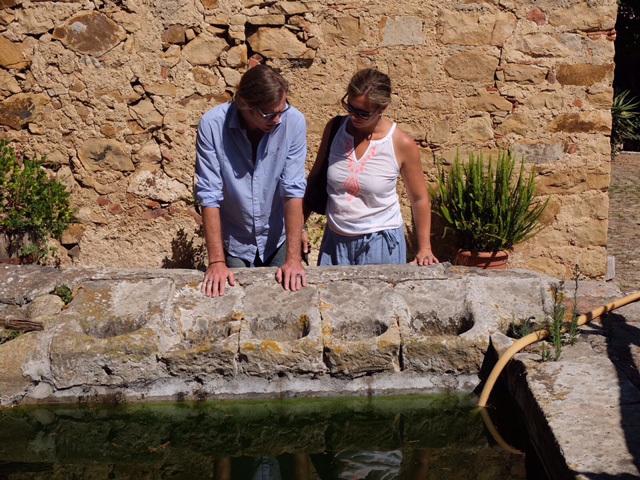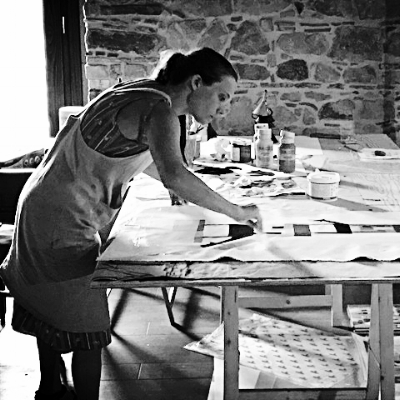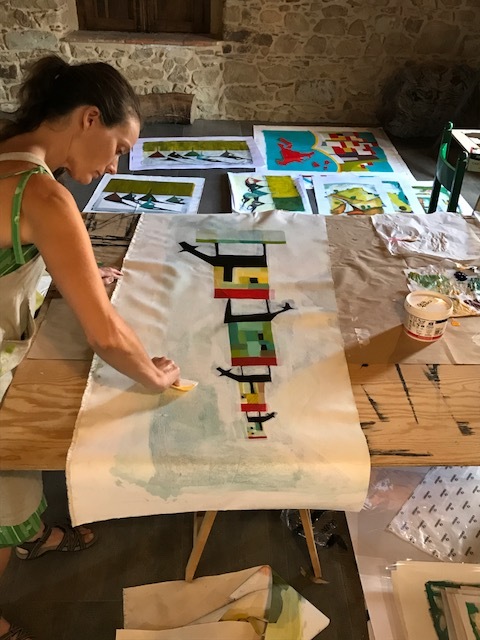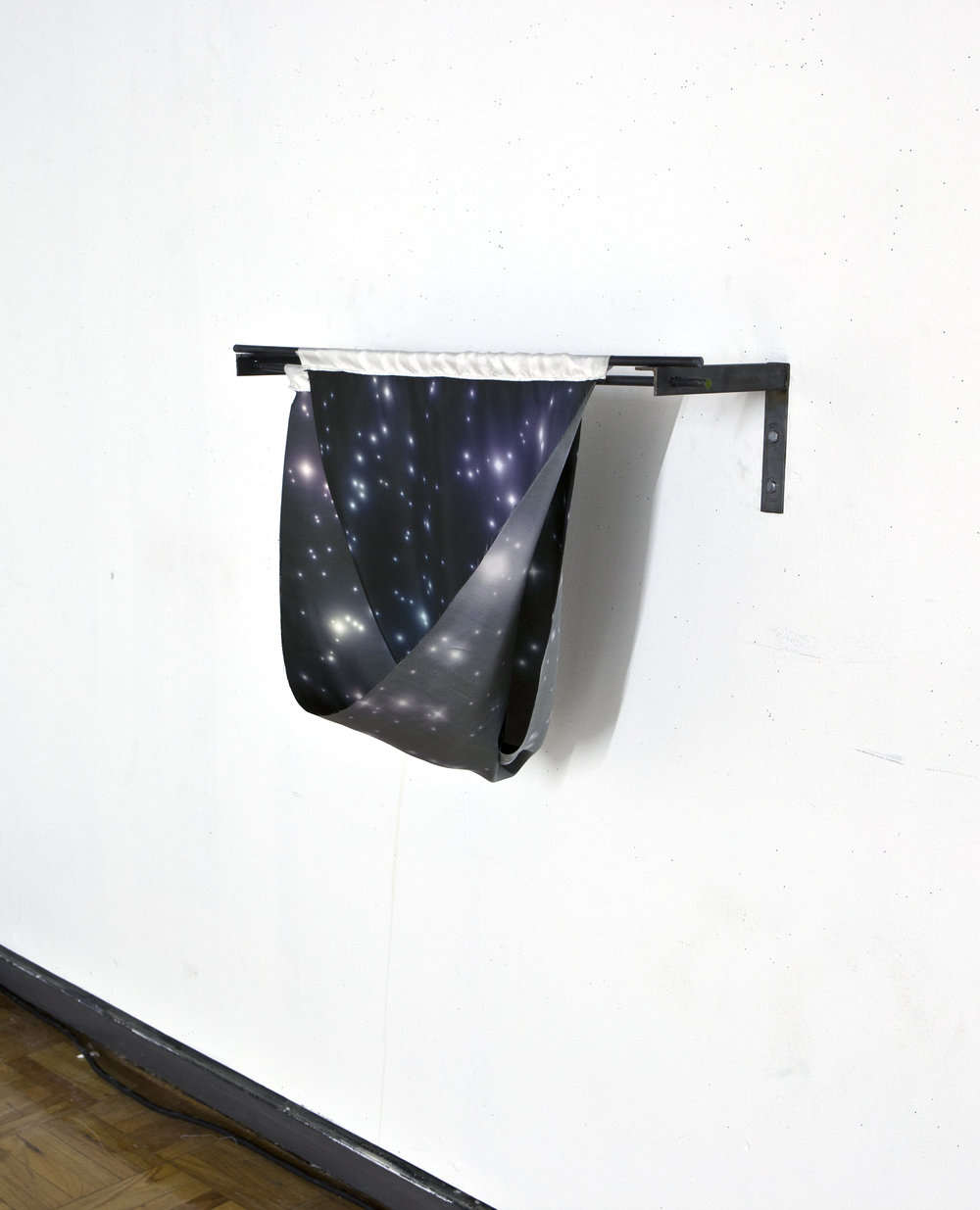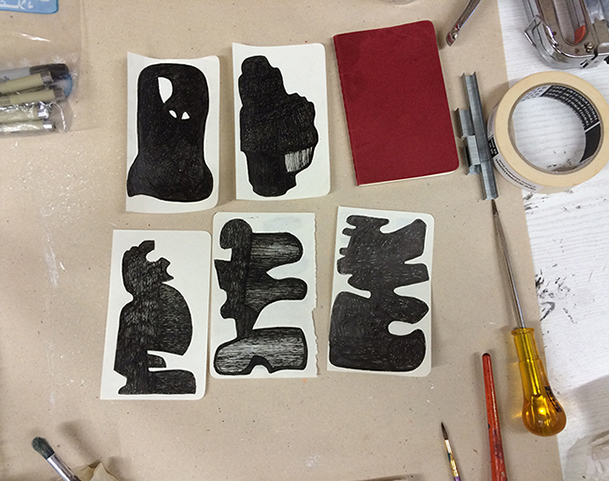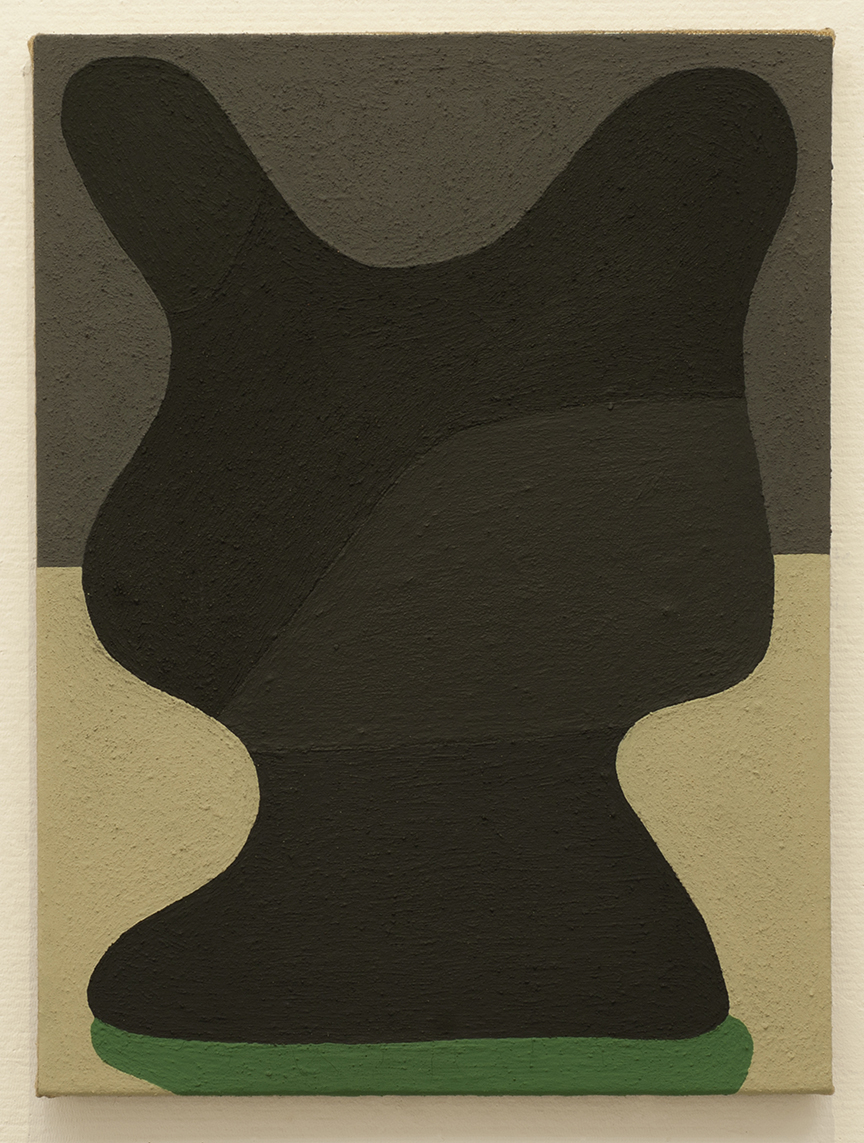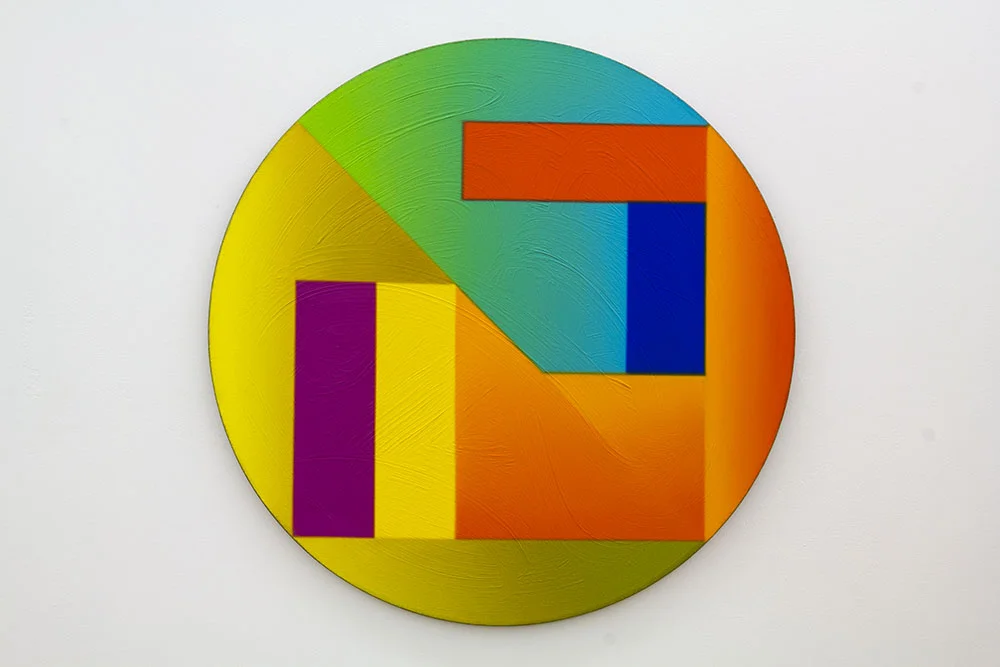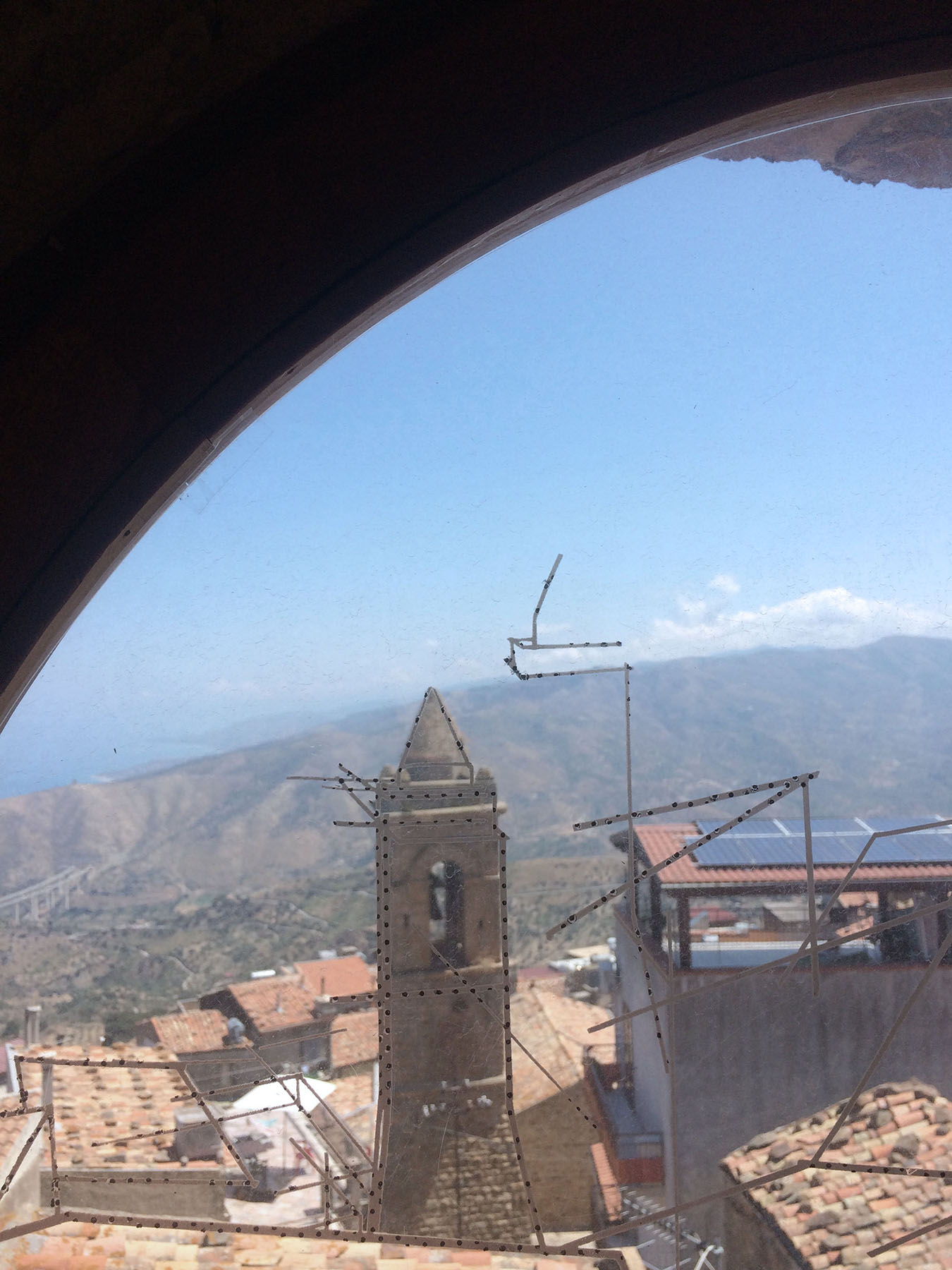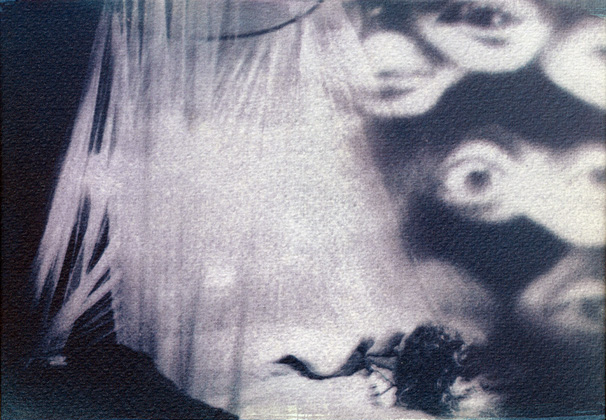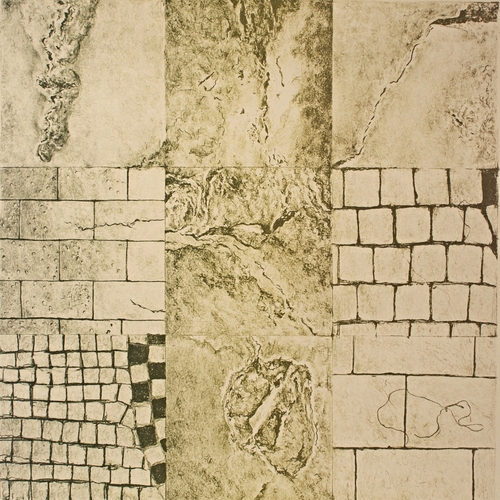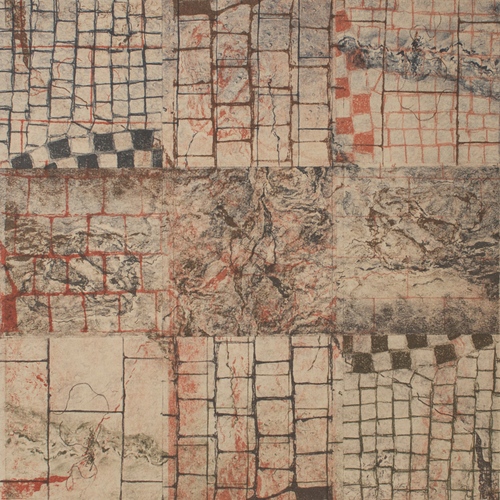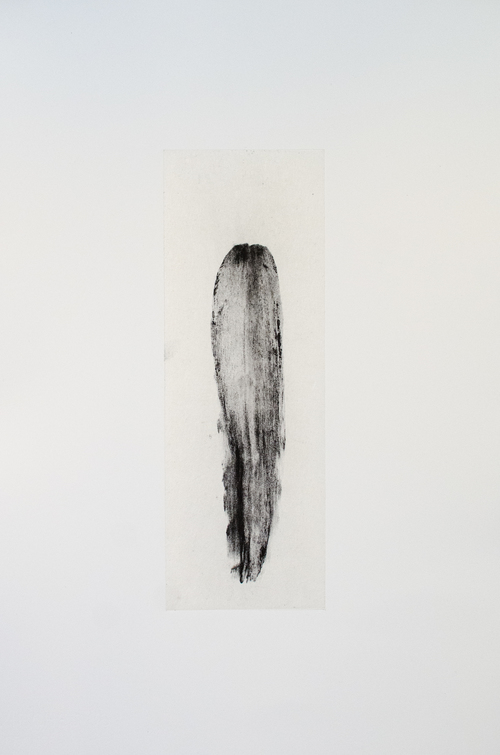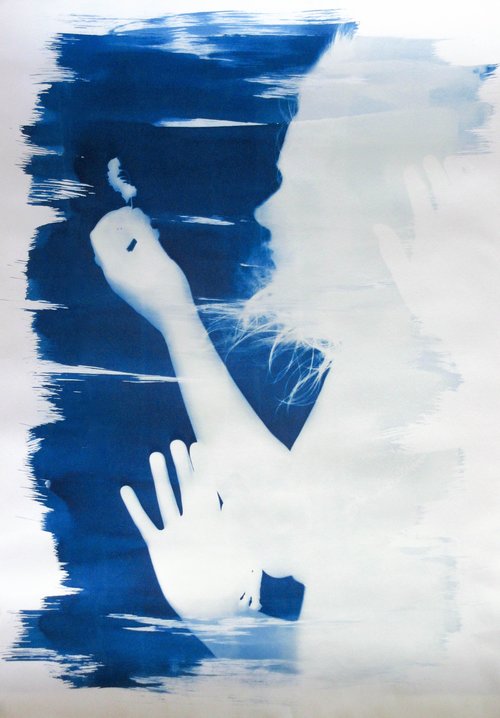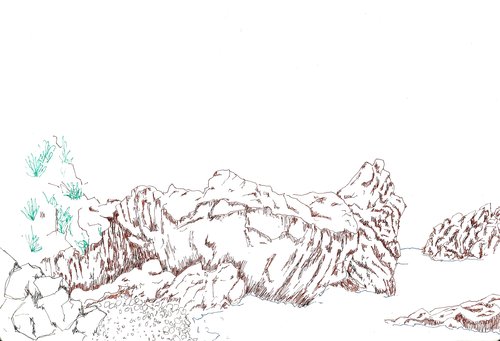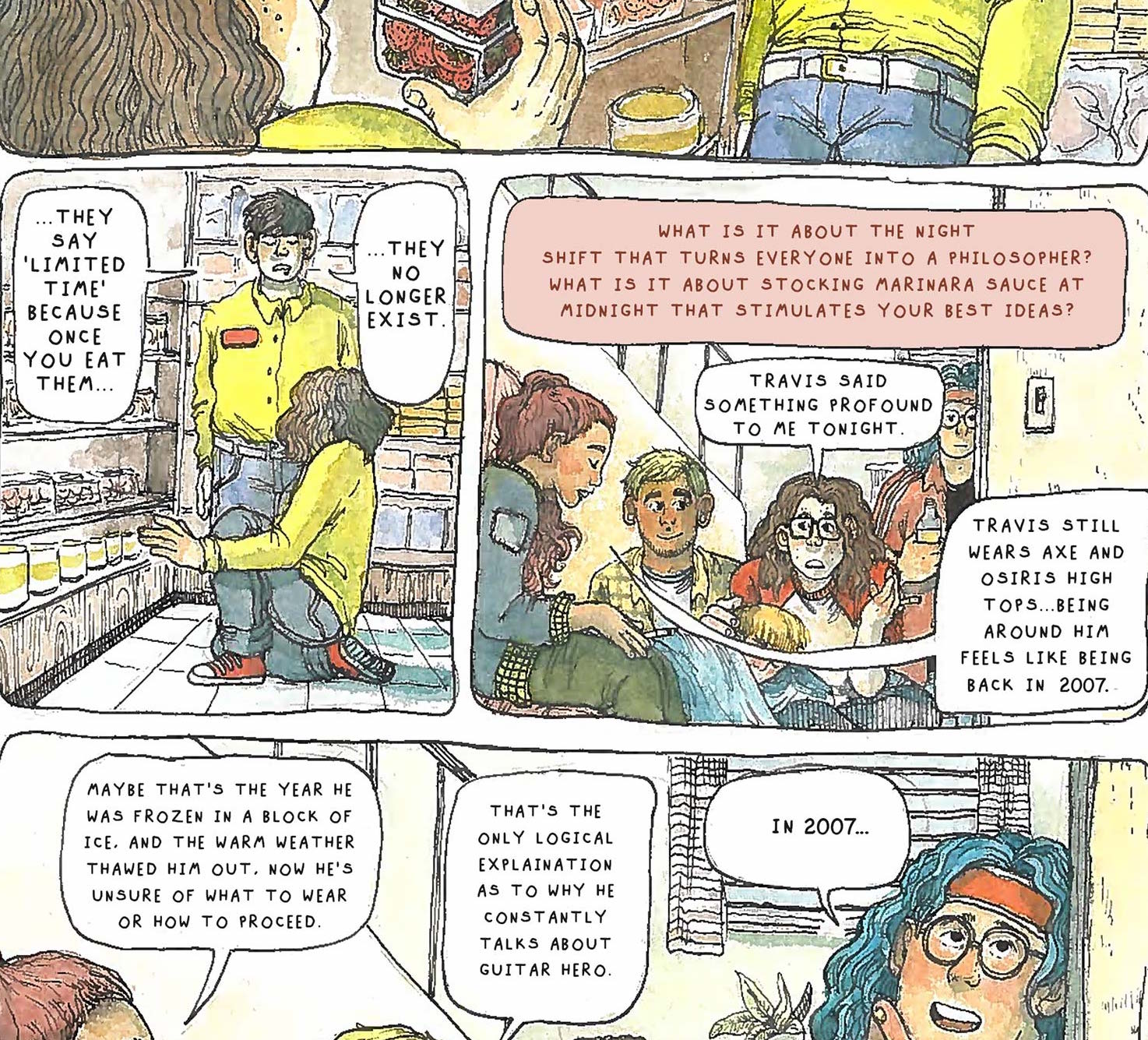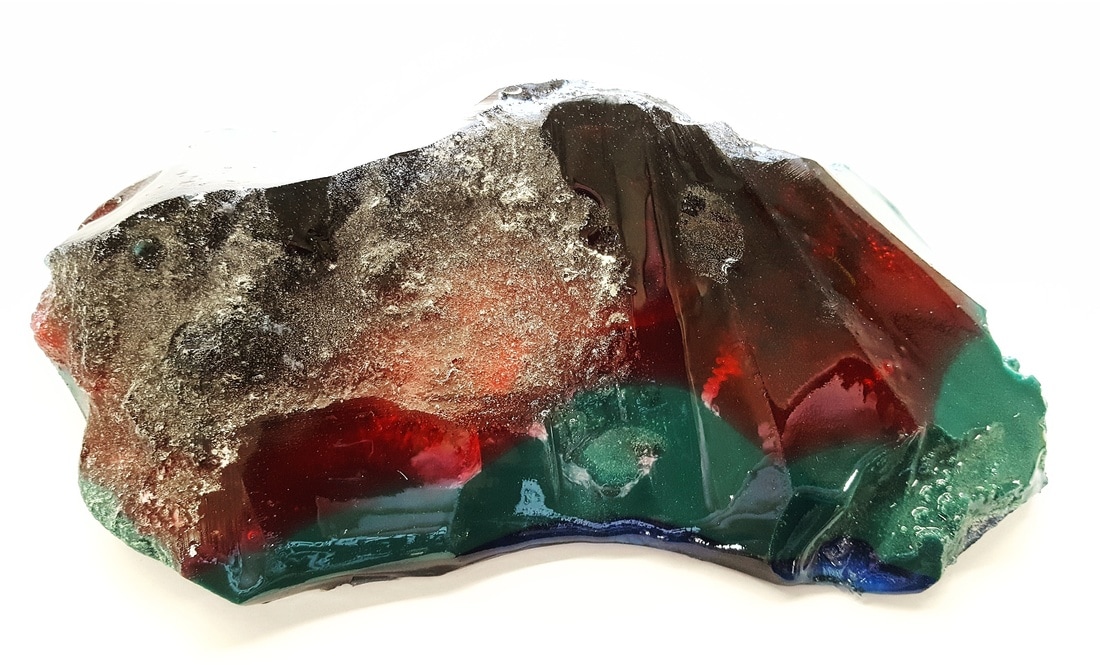Artists in Residence
Officina Stamperia del Notaio's Artists in Residence come from all over the world and work in diverse mediums; from film and photography, writing, sculpture and installation to painting, drawing, and, of course, printmaking. They live and work in Tusa for the duration of their residency, often finding inspiration in the place for their own work. Here you'll find the stories of our Artists in Residence, starting with the most recent.
Gabriele Abbruzzese (July and August 2019)
Gabriele taking photos at the beach
Gabriele Abbruzzese is an artist working in sculpture, installation, photography, and film. He is one half of the collaborative artistic duo, Concrete. He currently lives and works between Catania and Torino. He graduated in Digital Applications for Visual Arts from the Academy Fine Arts at Catania. He works with digital photography, video, and new media. He has recently exhibited at Von Holden Studio in Palermo, Galleria Occupata in Favara, Ritmo in Catania, and at BOCS in Berlin. Abbruzzese was a finalist in the FAM prize, 2014.
Concrete is the visual result of a conversation between two artists attempting to find formal explanations to real problems. Gabriele Abbruzzese and Lisa Wade come from different nations, backgrounds and training and came together to undertake collaborative projects in 2015. The first cycle of works in production addresses the instability of the A19 highway in Sicily, focusing on the IMERA bridge whose pylons gave way under a dramatic landslide, severing the main transportation artery joining the East and West of Sicily. Concrete uses this local news story as a pretext to question the repercussions of humankind’s intervention in the natural world as well as the fragility of the infrastructure created. Lisa Wade born in Washington, D.C. in 1972 and raised in the Highlands of Abingdon, Virginia, currently lives and works in Italy. She earned a BFA in Studio Art at Wheaton College and an MFA in Painting at American University, during which time she also studied in Rome. Since 2000, Wade has shown her paintings, installations, and video in the US and Europe, including New York, Berlin, Mexico City, Rome, London, Milan and Moscow. She won the Celeste International Prize in Installation/Sculpture in 2010. She was the only foreigner invited to represent Umbria in the Italian Pavillion of the 2011 Venice Biennale.
Geoffrey Little (July 2019)
geoffrey busy at work
I am a former documentary filmmaker and currently a non-fiction journalist who has chronicled science, natural history, business and technology from humanistic and historical perspectives.
I have two goals: 1) returning to writing non-fiction, I am developing a portfolio of possible book and magazine articles; 2) to work on a book about my village, Stonington, Connecticut, where my wife have lived for over 25 years.
For background, some of my long-form, 4,000 word + space/science stories for Smithsonian are here: Geoffrey Little - Air & Space SMITHSONIAN
About his work in Tusa:
"People should live in villages, Anthony Bailey believes, and proves it in a book that is a love letter to Stonington (pop. 1,622) on the Connecticut shore - he lives there. This is how things look, feel, and work (mostly well) in Stonington..."
Nearly fifty years ago, a non-fiction book, “In the Village,” was written about Stonington by an acquaintance of mine, former New Yorker writer, Tony Bailey. It’s an intimate chronicle of village life in Stonington circa 1970, when Tony, an Englishman, and his wife lived here. The full title: “In the Village: An Intimate Look at Life in a Small American Town and the Sense of Community That Smallness Fosters” Stonington, Connecticut, the American village where I have lived for the last 25 years, remains a small harbor town, but now with fewer than a thousand residents (and over 3,000 in the summer) perched on a thin, mile-long peninsula jutting into the Atlantic.
For the 50th anniversary of its publication--in 2021--I plan on revisiting the topics and stories in Tony’s book to document the changes from over half a century in an historic small, New England town. Since Tony’s book was published, much has changed, of course, but much has remained the same. The village is full of vibrant characters, conflicts and dramas large and small – from a suspicious and devastating 2004 fire to the rising threat of hurricanes and floods to the fierce (and funny) legal battles between neighbors.
Once a modest village of “rumpled, semi-famous people,” as described by American Poet James Merrill (who lived here until his death in 1995), there has been an infusion of ever-richer, part-time residents, here for perhaps a few weeks a year to sail or race their yachts and socialize. Set against this class are the workingman’s traditional trades and lives, including the last commercial fishing fleet in the state of Connecticut, still operated by descendants of the Azores (Portuguese) families who arrived here in the 1950s and 60s. The Portuguese traditional feast days are still celebrated with parades, costumes and religious festivals, such as the Blessing of the Fleet, and there is still a social club, The Portuguese Holy Ghost Society, that always host a lively crowd on religious holidays and year-round. The Declaration of Independence is still read aloud on 4th July, marking our separation from Great Britain. The Village Improvement Association, the News Office, The Free Library, and Town Docks, survive, as they have for a century. It is a way of life disappearing, just as village life is disappearing world-wide.
Between now and this summer, I am compiling stories for the narrative. My goal of the residency would be to complete a book proposal that comprises an outline and three chapters. here, and I have access to many strata, from the high to the low. More importantly, I want to re-engage with my academic training in anthropology, psychology and sociology. One of my many influences remains Irving Goffman, who wrote “The Presentation of Self in Everyday Life.”
Goffman showed how all humans live both an on-stage and back-stage life—usually several of them—at work, in our family and in our community. Among many others who inform my work are Ray Birdwhistell, who documented systematic, non-verbal communication among different groups of peoples, including Native Americans. I hope that I can draw inspiration from the town of Tusa, going through its own life changes which have occurred over centuries (unlike here in America, where 250 years is most of our history). And I hope that from a distance, I can see where I live.
In our villages there are many tribes—I want to explore how we are alike, yet inevitably separated from one another. If I am fortunate to discover universal stories, “In the Village – Revisited” will resonate far from Water Street in Stonington. Perhaps to all who live in villages, or those who dream of a place where there are no strangers.
Annie May Johnston (July 2019)
Annie may painting on shimmering velvet
Currently: Assistant Professor of Practice at the University of Texas at Austin. Founder of MOTIF, a hand-painted pattern design studio based in San Francisco, CA - motifamj.com
Before: MFA in Print from UT Austin
Earlier: BA in Psychology and Classics from the University of Colorado, Boulder
AMJ has lived and worked in Paris, Los Angeles, New York, and Denver and splits her time between Austin and San Francisco. While in Paris Johnston editioned works for artists like Jim Dine, Allen Jones and Miguel Mont. Recent awards include the West Coast Craft Scholarship, Kelly Fearing Endowed Presidential Scholarship in Art, the Constance Forsyth Scholarship in Printmaking and the Burdine Anderson Giese Endowed Scholarship in Art. She has shown work internationally and nationally, and recently completed a 90ft commissioned art piece for Facebook in Austin. Learn more about Annie May’s work here.
About her work in Tusa:
I would like there to exist places that are stable, unmoving, intangible, untouched and almost untouchable, unchanging, deep-rooted; places that might be points of reference, of departure of origin... Such places don’t exist, and it’s because they don’t exist that space becomes a question, ceases to be self-evident, ceases to be incorporated, ceases to be appropriated. Space is a doubt: I have constantly to mark it, to designate it. It’s never mine, never given me, I have to conquer it. My spaces are fragile: time is going to wear them away, to destroy them. Nothing will any longer resemble what was, my memories will betray me, oblivion will infiltrate my memory... Space melts like sand running through one’s fingers. Time bears it away and leaves me only shapeless shreds.
George Perec, Species of Spaces and other Pieces, pg 91
I use printmaking, drawing, painting and digital processes in an attempt to visually describe our surrounding environment – most recently interior performative objects and spaces. In this post-truth era, my newest body of work aspires to conflate fact and fiction - bringing together artworks that can be interpreted as a documentation of life, memories or relics, or a study of the moment from a place in the future - existing detached from a point of orientation. At first emotions and feelings flourish, prompting grand hope and possibility but as time mutates and transforms, the constant hum of the memento mori becomes louder and more distinct. The work depicts a secluded universe that is performative both visually and experientially. Combined and in the form of a silent play, the objects and spaces form a dark subtle magical realism that reinforces the experience of art as an instrument for myth making.
Drawing from my background in the Classics, origin myths, Greek tragedies, and epic poems play a central role. Consider the origin myth of purple, featuring Heracles and his dog taking a walk on the beach. Biting into a sea-creature, Heracles' dog suffers a stained mouth and fur but discovers a pigment of such value that it speaks only to the very wealthy for centuries. The color pops up multiple times in the tiny scraps we have from Sappho (630 BCE – 580 BCE) yet there is no mention during this time period of the color blue. I imagine that this origin myth is transported on ships and through "wine-dark" seas, surviving wrecks and weathered strandings, only to be re-told in performance again as myth.
Our personal and preferred group myths are causing us to seek out and experience one truth, much like the individuals in Plato’s cave. I am negotiating this discrepancy through the layering of images within images and divergent perspectives that afford the multiplicity and simultaneity of a digital screen. These warm and cool surfaces flatten and blur the traditional perception of discrete objects in space. An uncanny, hybrid dimension emerges where form, space and time flow together.
As a child, I spent every summer at our Greek family’s home in Thessaloniki, Greece. I remember watching construction workers trying to build a parking lot and inevitably discovering old ruins some feet down; small amphitheaters, homes, and communal areas covered by the now modern sprawling city. I would find myself daydreaming about the people that lived there, where they were going, how they were living. These experiences fostered my interests as an undergraduate student and I immersed myself in the study of Greek and Roman art, architecture, literature and language, finding incredible ties to our modern society that have lasted thousands of years. During graduate school I had the opportunity to help teach courses in Tuscany and I found myself using weekends to obey the pull I feel to old ruins and long walks in unknown cities. Today, I imagine the Mediterranean heat and the smell of the rocks as I work through my pieces. Drawing from my background in the Classics, origin myths, Greek tragedies, and epic poems play a central role so I am very interested to see what I will make if granted the chance to work in Tusa. The proximity to Halaesa, the Regional Archaeological Museum in Palermo and Taormina’s ancient theatre will foster productive and relevant research as well as a truly personal and unique residency experience.
Maisie O’Brien (July 2019)
Maisie o’brien with the calvario in the distance
I could have sprouted out of the ground from Southern China — that’s about all that anyone knows before I was adopted from Jiujiang and raised in the prairie oasis of Dallas, TX. As the daughter of a film photographer, I sympathized early with the need to frame the world in a soft and sinister Noir. It is upon these two foundations of my childhood, then, that I explain myself for my aesthetic:
My first flirtations with art were through printmaking and stop-motion animation. An introduction to woodcut and intaglio in high school led me to pursue a lithography-based printmaking major at the Pennsylvania Academy of the Fine Arts. While still in school the most impactful experience was in earning a travel scholarship which I used to study folk art and puppetry across Europe and the United Kingdom. After graduating from PAFA’ s Certificate Program in 2016, I took an additional year to complete my BFA at the University of Pennsylvania where I piqued my interests in Folklore, Anthropology, and Earth Science. Around this time my studio interests expanded to various folk rituals and theatrical traditions and their role in social commentary. Seeking the time and community to explore these topics further for my art, I have since had the pleasure of participating in the Bread and Puppet Apprenticeship in 2018, and Officina Stamperia del Notaio’s studio residency in Sicily last summer. Currently my ongoing series of animations and collage theaters focus on pushing my sculptural and performative tendenceis towards a unique multimedia expression.
About her work in Tusa:
In my art I recognize a progressive intoxication with the illuminated form. My process has shifted as if everything is now for the stage and its footlights. As to why, I only know that at some point I grew hungry and I stopped working in black and white solely for their pigment or value. At some point I wanted only to play with light and shadow themselves. My medium of choice became the dancing of them together. This choice influenced a return to the simple substances of paper to explore its infinite light-catching or light-stopping properties. Cut out, painted over, printed on, pierced through, blackened into silhouette--I’m not tired yet.
My love of bright and murky form, their range of competitive or harmonious behavior in reaction to each other persists as an overarching characteristic of my art. My imagery itself is fluid and migrates with the events in my life, but there are some recurring scenes and gestures that permeate this personal mythology. They concern bodies of water and geological formations, food, plant life, and bizarre creatures caught in a macabre drive of delight and pain. My most recent body of cut paper ruminates on (largely feminist) frustration, anxieties, and aggression. Grotesque, and intentionally a bit erotic, they are meant to hang in the window so that sunlight passes through them. Their public nature demands a similarly public platform for conversation, refusing to yield to the double edge of silence and ignorance.
Broadly, my current works on paper indulges an increasing theatricality. It is out of my devotion to the illusion of seeing, and more critically, it is a celebration of how performance antagonizes the authentic. As a whole my imagery migrates with the events in my life. Metamorphosis and liminality are two main themes, conversant with other thoughts on how we view ourselves as both agents and products of our environments. But on an intimate scale, these moving parts and lighted stages that I have been making are for me to assert and populate a personal mythology. Their final performance is a passage, and in this way I find them extended from the sculptural, printmaking, or painting techniques that began them.
Tusa — its overlapping sense of retreat and reality — helped me to process the death and loss of one of my first role models, my substitute grandfather. Tusa’s physical climate shaped much of the work I produced there. Its strongest influence for me was its constant opposition to gravity architecturally, geographically, and acoustically, with the resulting pieces coming from the surrounding igneous formations and wind patterns. Beginning with a large multimedia work on paper, I deconstructed the whole to allow for its reincarnations in sculpture, collage theater, and stop-motion animation. Addressing the original by its pieces prompted a reconsideration of the whole, and for this specific body, meant to challenge my perception of the solid or permanent as being held within a more fluid frame. My time in Tusa was for me a rite, a memorializing ritual that allowed me to re-orient and mourn creatively through ink, watercolor, and paper.
External Links to find my work:
You can find my most recent, finished work posted to my official artist’s website: maisieobrien.com
For a more casual view into works in progress, please see my artist’s instagram: @vegetable.lamb
Lindsay Deifik (July 2019)
lindsay in catania
Lindsay practices in Philadelphia, PA, where she received her MFA from the Tyler School of Art. She also holds a BFA in Printmaking and Drawing from Washington University in Saint Louis. She is a former co-director and resident of Front/Space, a 2013 Rauschenberg Seed Grant recipient. She has been an artist in residence at ACRE, the Philadelphia Art Hotel, the Charlotte Street Foundation's Urban Culture Project, and an Apprentice at The Fabric Workshop and Museum. Lindsay teaches printmaking and drawing at West Chester University. She is currently a member of Fjord, an artist run exhibition space in Philadelphia. Learn more about Lindsay’s work here.
About her work in Tusa:
This new series of work presents female body fragments that evidence a history of contact: impressions, wounds, and restrictions. It allows a viewer to wonder about the inherent violence of operating a body, particularly a female body. I recognize that the term “female body” is charged and complex, and can only speak from my experience of inhabiting mine. The work is by no means an exercise in exclusion, and hopefully can encourage a sense of expansive sensitivity, and even tenderness.
These drawings are an exercise in and celebration of vulnerability in a world ready and willing to consume and harm female flesh. Dismembered female bodies are often seen in crime dramas or described in wildly popular true crime media.
These gory objects are almost always meant to titillate– to enact taboo fantasy while simultaneously condemning these actions as morally abhorrent. My work is not meant to recreate this phenomenon, nor pay homage to it. It is grounded in a deep sensuality and a sonorous emotional register. They waver between being obviously figurative and then vaguely legible, and sway between the social, medical, and psychological. This series is not meant to cast this body as merely a victim, but also as an active participant in performances of lust, participatory violence or constraint, and love. There is also Power here. It is ultimately an investigation of the nature of female desire and its accompanying pain, forged inside a culture roiling with patriarchy and misogyny.
What is the nature of female fantasy? Can it even be imagined given the subjugation of this gender throughout our history?
Diane Gorman-Sorg (July 2019)
Diane is a natural in this environment
Diane Gorman-Sorg is an American artist who received her Bachelor of Fine Arts Degree in painting at the Rhode Island School of Design. For 20 years she has worked professionally as a fine artist and architectural color consultant. She has a passion for seeing color derived from the natural world and integrating it into the built environment. She worked as a colorist/ painter/draftsperson for Zaha Hadid Architects in London and has created numerous color concepts for Bosch, the Klinikum Stuttgart:Olgahospital/Frauenklinik and private residences in Germany. She currently lives in Stuttgart, Germany.
About her work in Tusa:
Upon arriving in Tusa, the labyrinth of streets immediately invited me to wander. While visually assimilating the town, I was drawn to facets of architectural details and started recording them in outdoor painting studies and photographs.This process led to seeing layers of time in the various colorsof the plaster facades.The older, sometimes neglected buildings were painted in tones of pale ultramarine blue, sage green, bleached terra-cotta and sandy ocher, all earthy hues mirrored in the landscape. The newly renovated buildingswere often painted in bold egg yolk yellow or bright orange, ignoring the more natural historic palette. The color palette of Tusa started to sink in and become instilled in my mind. In addition to color, the facades were encrusted with pragmatic plumbing and entwined electrical wiring, whos cast shadows on the walls added a layer of black abstract forms.
These elements fused together and became the base of inspiration for my indoor studio work. This began with a series of black ink mono prints printed on the paper used for wrapping up bread in the local shops. Then a series of abstract maps/color studies evolved out of experiments with cyanotypes that were worked over with oil paint, in a process reflecting the layering intrinsic to Tusa.
You can find some of the work created in Tusa on her website: https://www.gorman-sorg.com
Jessica Caponigro (July 2019)
jessica during the filming of her performance piece
In her interdisciplinary practice, Jessica Caponigro creates physical objects, installations, and multiples, as well as writes and facilitates participatory actions. Her work blends accessible and egalitarian concepts with ritual and performance, exploring ideas of restriction and reproduction. Her research includes how those in power have used storytelling and reproducible media to control history, and how marginalized communities have used independent publishing to tell their own stories and fight back against oppressive systems. Before its dissolution, she was a founding member of the non-anonymous W.I.T.C.H. Chicago, as well as the feminist art collective Tracers. She frequently facilitates workshops and speaks on panels, recently at Harvard University, the Museum of Contemporary Art Chicago, the University of Kentucky, Oberlin College, and NYU Florence. Her writing has been published on the Women's Museum of California website, American Fly Trap No. 1: The Post Truth Issue, the Mid America Print Council Journal, Chicago Artist Writers, and BostonArt Review. She currently lives and works in Boston, where she operates Snake Hair Press, an independent publisher of zines, multiples, and artist books. Learn more about her work here.
About her work in Tusa:
I was raised by fiercely independent Sicilian American women who strongly believed in holistic medicine and the powers of the earth and intuition. Though I have never been to Sicily, my great-grandparents came from Pettineo and Santo Stefano, and many of the people who were an integral part of my childhood had emigrated from Castel di Lucio. My practice is intrinsically linked to the the folklore of Sicily through an American immigrant lens, and I am interested in how these legends will affect and amalgamate with the reality of Sicilian life and culture.
My practice is slow and contemplative. I research and experience, then allow intuition to guide the outcome. During the residency at Officina Stamperia del Notaio, I will create drawings, sigils, and small sculptural constructions from materials found in Tusa. Working with found materials, including native flora, I will create collagraphs and cyanotypes. I will also create temporary, site specific installations that directly link to the town and its inhabitants’ physical and psychological space, as well as facilitate participatory ritual performances and processions.
Janet Haslett (July 2019)
Janet exploring the calvario
Janet Haslett is an Australian based artist working primarily with landscape, archives and collections. Her paintings, drawings and sculptures are created using a wide range of materials from traditional mediums to recycledremnants from her studio. Her paintings may evolve into sculptures, while her sculptures often evolve from finding the marvellous in the mundane.
Her most recent exhibitions in 2018 include Horses, curated by artist Noel McKenna at the Darren Knight Gallery, Sydney and Interiors, curated by Gavin Wilson at the Orange Regional Gallery. In 2017 her work was shown in Contemporary Art in the Secret site of Imogiri, Indonesia, curated by Sonia Legge as a parallel event to Jogyakarta's ART|JOG17, the Hill End Table: Food, Fire, Art at the Bathurst Regional Art Gallery, NSW and Fear of Forgetting curated by Steven Cavanagh at Contact Sheet, Sydney. She has been awarded residencies by Graniti Murales, Italy, the Rumah Lebah Gallery, Indonesia, the British School at Rome, Italy, ArtSpace, Sydney and the Paris Pata Studio.
Janet holds a Master of Fine Art (Painting) and a Bachelor of Fine Art (Painting) from the National Art School, Sydney and an Advanced Diploma of Fine Art from the Sydney Gallery School, NSW. She is a sessional lecturer in the Drawing Department at the National Art School, Sydney and her work is held in private and public collections in Australia and overseas. Her work can be seen on her website here.
About her work in Tusa:
My proposal, which comes out of my landscape practice, is to explore the possibilities of reconciliation between an actual space and its representation. This research into the landscape will occur in two stages. The first is to explore, record and analyse my immediate impressions of the Tusa landscape through drawing and painting. The second is to use this visual and sensory experience of the place to adapt, recycle and reinterpret the first body of work (along with any appropriate found materials) into a second body of work. This is where I will be working to reconcile my experiences of the landscape with its representation. I am not sure how the final, or even the initial, works will be resolved, but my practice has always benefited from the great stimulation and unexpected opportunities that arise in new environments.
Alessandra Pozzuoli (July 2019)
Alessandra with a new friend
Alessandra Pozzuoli is an interdisciplinary artist. Her work is influenced by notions of ethnic identity, gender, rituals stemming from popular religion (religion practiced outside an ordained place of worship), and the cultural importance of grandmothers.
Pozzuoli is a graduate of Rhode Island School of Design (2018), earning a BFA in Painting with a minor in History, Social Studies and Philosophy. Her practice includes painting, printmaking, collage, mixed media sculpture and casting. Her research focuses on ethnographies, art history, and oral histories of immigration. She currently resides north of Toronto, Canada. . You can learn more about Alessandra’s work here.
About her work in Tusa:
My practice researches small scale, daily expressions of faith. One example of this I wanted to explore during my residency were locally made shrines. Shrines are capable of making private beliefs and prayers public. In Italy, two types of public shrines are the largescale edicola sacra (sacred kiosk) and the small scale capitello (referencing the top of a carved column). Beginning in the 11th century, edicole were adapted from pagan Roman funerary shrines called larariums. Throughout the Middle Ages, both edicole and capitello were built at former sites of pagan worship, and then constructed along sites of Christian pilgrimage. Both still exist throughout Sicily and towns of the mezzogiorno. Often in a new urban context, capitello can be found on the sides of building walls, near doorways, windows, front steps, and in alleyways. The construction of these alternative sacred spaces uses any available materials while often referencing church vernacular. They become part of public space while being a vestibule for intimate moments of spiritual contemplation.
I spent my time in Tusa learning about different aspects of Sicilian social and religious life. This included learning about daily life in the town and surrounding areas, spending time in churches and studying their architecture, and visiting shrines beyond those churches. Much of what I saw was documented through drawings and photographs, which then became monotypes and a series of printed etchings. These etching plates (done on plexiglass) and photographs also became useful for making cyanotypes as part of a residency group workshop.
Fiona Robinson (July 2019)
Fiona working in the studio
Fiona was born in Glasgow and grew up in the new town of Cumbernauld. She was introduced to art by drawing with her father and uncles who were engineers from the tradition of shipbuilding on the Clyde. At school she was part of a programme allowing children showing talent in drawing to attend the Glasgow Museums and Art Galleries to draw on Saturdays. She has since lived in London where she studied and worked as a surveyor before studying printmaking at Central St Martins School of Art where she specialised in etching with Norman Ackroyd. Fiona describes herself as an experimental and intuitive printmaker. The great joy of printmaking is the surprise and the accidental leading the way to resolving a project. The themes of her work are maps, ancient landscapes and pathways. The sea, rivers and flora are inspiring for her as a source of imaginative speculation. Leaving Scotland was traumatic and she has used her art to express or find a sense of place. She uses predominately the colour blue and a minimalist pallete to layer monoprints and etchings together which give a delicate and gentle experience of the landscape around us. Her work has been described as musical and poetic. She has been influenced by Paul Klee and the exciting experience of celebrating or sharing personal significant life events with the land as in the work of Ilana Halperin. Fiona has travelled extensively in North West Scotland and the Islands. She has recently visited Iceland and plans to return to make drawings there on a glacier. An opportunity to spend Christmas and New Year in Morocco was a great source of inspiration for future travel there. Find out more about Fiona’s work here.
May Tveit (July 2018)
may watching the moonrise
Large scale and formal succinctness are hallmarks of my sculptural installations. These works may exist for a few hours, a few days, or longer. They can be found in traditional art containers or in nontraditional settings. My work is conceptually driven and materially diverse as I typically employ ready-to-hand objects and structures in order to reveal latent meaning and visual dynamism. The visual playfulness in my work generally serves as a seductive entry to critical underpinnings. I strive to create art experiences that are thought provoking and critically relevant to our times.
May Tveit is an American artist whose site-specific art and public art has received national critical reviews in Art in America, Art Papers, National Public Radio, The Kansas City Star, and Review Magazine. She has received numerous honors and awards including an Andy Warhol Foundation Rocket Grant, American Institute of Architects Allied Arts & Craftsmanship Award, Charlotte Street Foundation Fellowship, Hall Center for the Humanities Creative Work Fellowship and participated in the Art OMI International Artist Residency program.
Her work is represented in the corporate collections of Hallmark International, Fishnet Security, National Center for Drug Free Sport, Andrews McMeel Publishing and numerous private collections.
May holds a Masters Degree from the Domus Academy in Milan Italy, and a BFA from the Rhode Island School of Design where she participated in the European Honors Program in Rome, Italy. She has taught at the Rhode Island School of Design, the Kansas City Art Institute and currently teaches at the University of Kansas. To learn more about May’s work, visit her website, here.
About her time in Tusa:
While in residence I would like to focus on making monoprints and drawings related to a sculpture series I recently completed titled Universal Boxes. My plan is to use corrugated cardboard templates and stencils to explore concepts and image making related to the ubiquitous box while exploring emotional aspects related to human compartmentalization.
Last summer I took a week long intensive workshop with Lari Gibbons at the Anderson Ranch titled: Innovative monoprinting methods: blocks, stencils and the laser cutter. I was so excited and productive in the range of the works I created. I would love LOVE to apply this knowledge to a new series and continue this exploration in Italy. The prints I have created so far use roll up black ink & Rives BFK paper. I love how the roll up black mimics the color and tonal range of graphite pencil when printed and I plan to work with this limited palette- parameters. As a sculptor who works on large scale labor intensive objects, printmaking offers me a different breathing space to explore ideas.
Misa Gott (July 2018)
Misa on the press
Misa was born and brought up in Chiba, Japan. She came to the UK to study law and consequently worked in financial sector for over 10 years. She went back to studying art in 2010. She lives and works in south London. About her work, she states:
My work is based on everyday, ordinary encounters with nature such as the sound of rustling leaves and the humid smell of rain. I find more connections with nature through these encounters than grand, sublime sceneries. I believe this is due to my upbringing in Japan. In Japan, our relationship with nature seemed much more closely woven into daily life. Japanese people live with natural disasters as well as the abundant benefits the dramatic nature offers, such as hot springs and cherry blossoms.
In my work, I explore the relationship with nature using amorphous and organic forms in contrast to geometric shapes and marks. While geometric shapes and marks often represent “man-made”, I am fascinated by the coexistence of regularities and randomness in nature. We human beings attempt to make sense of nature by trying to find regularities or applying rules i.e. finding patterns. Yet we are surrounded by and are part of the intangible and transient laws of nature.
The transiency and elusiveness of nature informs my process. Once I determine a starting shape and colour, the rest is produced organically following my instinct and aesthetic. Printmaking for me is not just a process to produce a final image but a way to “cultivate” my work as I run it through a printing press. While my prints tend not to be multiples, I often create a series of images in order to depict the movements or sequence when viewed together. To learn more about Misa’s work, visit her website, here.
About her work in Tusa:
I have visited Sicily many times on holiday. I am drawn to variety of nature it offers - mountains, seas, and volcanos, similar to where I grew up, Japan. Therefore, it evokes nostalgic feelings for me and has always made me want to connect with the nature there. As you will find in my artist statement, my work is inspired by everyday encounters with nature. Sicily has more accentuated shapes and colours in nature than both Japan and UK. The residency will give me a dedicated time to create a series of work in response. As my work is largely improvised, it would be beneficial for me to be at the location where I get inspirations then able to create a work immediately. Lately I have been creating my work using collages with colour printed papers then monoprint over them. I use both intaglio and relief techniques for my work. I am keen on using non toxic process and materials so I tend to avoid etching.
Anne Austin Pearce (July 2018)
Anne enjoying the outdoors in Tusa
Anne Austin Pearce illustrates those moments for which there is no distinct emotional adjective to employ – ambiguous moments that occur exclusively in one’s head or often between two peoplge at an intersection of communication. It happens when we are grappling with a dream deferred or an expectation not met. It is the time passed shifting sensibilities, wavering between resolution and avoidance, teetering at the threshold of debilitating anxiety or liberating submission, deciding what, when and how to speak, what to distill, and whether to scream.
Anne Austin Pearce was born in Lawrence, Kansas and studied art at the Kansas City Art Institute, Brighton Polytechnic and the University of Kansas. In 1993, Pearce received a full scholarship to James Madison University, where she received her MFA in drawing and painting. Her work has been recently acquired by the Nerman Museum of Contemporary Art and the Spencer Museum. Exhibitions include Nerman Museum of Contemporary Art, Overland Park, KS; Corcoran School of Art and Design, Washington D.C.; and the Drawing Center, New York City. Anne’s first museum show will be at MDC’s Museum of Art + Design in Miami, 2013.
Currently, Anne is a Professor of Art at Rockhurst University and Director of Greenlease Gallery. To view more of Anne’s work, visit her website, here.
About her time in Tusa:
While in residence my goal/hope is to make a collection of 50-60 small drawings in response to the sea and land, gathering visual information/pattern/color/light the small works will inform a series of large scale works on paper. Both the small and large scale works will be in service of a broader, ongoing work titled Icarus that is, in and of itself, a transient, compressible, large scale installation comprised of hundreds of drawings varying in scale. These parts have been made, worked, reworked, cut, re-cut, some digitally reproduced and drawn into again. This process is an examination of and participation in production, reproduction and disintegration. Both the process and product are intended to parallel the condition of being an animal / human in the course of an entire life. The pursuit of fitness and flexibility within my practice and frame of mind hopes to be able to move gracefully and with agility as hopefully work can move fluidly within in architectural spaces and while possessing the ability to come off a wall and occupy a tiny space. I want my work to mimic a squid.
Juliet Graziano (July 2018)
Juliet at the loom
After graduating from the university of Brighton in 2013 with a degree in Woven textiles Design, I started work at Burberry as a menswear fabric developer. Unfulfilled with the fickleness of the fashion industry and the lack of creativity within my role, I setup my own weaving studio on the side in 2015, and worked there on my own skills on weekends. By the end of 2016, I left my job at Burberry to set up my own woven textiles design business full time. Since then, paid work has been slow, but I have managed to develop my own skills within weaving and explore my own interests and possibilities. At the beginning of the studio, I wanted to focus more on textiles design for fashion as this is how I was taught at University. However, I have now developed my interests and skills to align more with woven textiles within an artistic framework, and have been exploring this through my recent work.
In early 2017, I travelled to Western Rajasthan, India to work on a personal project I’d been developing since 2015 called The Woven Kind. It’s aim is to research, document and in turn promote traditional weaving techniques of global artisan communities to help create an appreciation and awareness of these continued, masterful practices. Once the mini documentary is completed, I hope that this will help me gain funding for further research within other countries (Ghana, Japan and Guatemala).
Within weaving, it has become clear to me that my interests lie distinctly within the technical side of weaving, and exploring how the craft varies from person to person, country to country. I want to explore techniques more as they truly are infinite within weaving, whilst re-developing my own aesthetic style. Through this shift, I am exploring in more depth the technique of tapestry weaving and how I can use this to represent ideas in an exciting way. To learn more about Juliet’s work, please visit the following sites:
Instagram https://www.instagram.com/illaewovenstudio/
Facebook https://www.facebook.com/illaewoven/
Instagram for my Project 'The Woven Kind' https://www.instagram.com/thewovenkind/
About her time in Tusa:
I feel Sicily is my second home, despite never having lived there and not speaking Italian as best I can. I want to explore Siclian Identity, what’s important to Sicilians today about their Island, and represent this through woven tapestries. I want to discover what Sicilians hold dear, how they connect with these things (places, objects, spaces, institutions) and how this creates their identity. The tapestries will use pattern, colour and shapes to represent objects, places and people relating back to my research. These tapestries will be a collection and together will create a narrative to encapsulate Sicily. I aim to have a tapestry for each theme, and these themes will emerge from my research.
Aoife Reilly (July 2018)
Aoife at work with kalimba by her side
Aoife Reilly lives in Co. Galway, Ireland and has had her work published in magazines including The Lake, Message in a Bottle, Poethead, Crannóg, Boyne Berries, North West Words, Antiphon, Skylight 47, ROPES, The Ogham Stone, The Galway Review, Crossroads(forthcoming), Cold Coffee Stand (forthcoming), A New Ulster, Spontaneity.org and Tales from the Forest. She facilitates the Artist’s Way programme and has studied African percussion and dance for over a decade. Aoife has collaborated with visual artists in Ireland to create outdoor instillations focusing on nature-based themes. She reads her work regularly in Ireland and has recently published a first collection, Lilac and Gooseberries, with Lapwing Press and is working on a second collection at the moment.
previous work:
previous publication samples:
http://spontaneity.org/issue-11/spontaneous-love/
https://talesfromtheforest.net/2016/10/06/aoife-reilly-bypassed-the-blue-bicycle/
collection available from Lapwing publishers at:
https://sites.google.com/a/lapwingpublications.com/lapwing-store/aoife-reilly
to hear Aoife read her recent work click the link below:
About her time in Tusa:
Whilst at the residency In Tusa, Aoife examined the themes of love, loss, nature and belonging through poetry. She explored the landscape of Sicily in her work and wrote on themes she saw implicit in this land as well as comparing and contrasting Sicilian and Irish mythology through poetic form. Aoife also spent time composing poems with melody and polyrhythms using a loop pedal and the kalimba (an African musical instrument consisting of a wooden board with attached staggered metal tines, played by holding the instrument in the hands and plucking the tines with the thumbs).
Here are two examples of her writing done while in residence in Tusa:
Sicilia
They say that when you sip the wine,
when you ingest the olive, rosemary and basil,
this land is absorbed into your body
and becomes part of you in touch and taste
so you might understand the soil and her stories-
bitter, sweet and salt together wrapped
in an ocean framed with turquoise and enough time
to sit, break bread and sink into listening
to poplars chatter with cornflowers on the wind.
Watch light in conversation with land;
how it spills gold over rusty fields
asking us to stay open,
asking us to feast on this life.
Diana
I am the water bearer,
guardian of the woods and the wild
I travel the daylight in thick stone pines.
I am the voice of the deer,
the force in the oak,
I shine through your womb
an infusion of hope.
I live deep in cool cisterns
where I dance through your waters,
I am the daughter of Jupiter,
the gateway to temple walls
dense with memory and ocean salt.
I am the arrow you shoot into love,
the wound and your hope
for the answer
Christiana Caro (July 2018)
Born in Washington, DC, Caro earned her BFA in photography from the Massachusetts College of Art in Boston (2002) and her MFA from the University of Arizona, Tucson (2011). She has participated in a number of artist-in-residency programs, lectures, and exhibitions in the US and abroad.
From 2011-12, Caro received a Fulbright Fellowship for research in Slovakia, during which time she also founded and curated Clutch Gallery, a pop-up exhibition space that showcased the work of Slovak and US artists. In 2015 she co-founded a similar project for local artists in Norfolk, VA - Range Gallery.
Caro has taught photography and art history at Old Dominion University, the University of Arizona, the Florence University of the Arts, the Virginia Museum of Contemporary Art, the Governor's School for the Arts, and served as a visiting Fulbright artist at the Academy of Fine Arts and Design, Bratislava.
Caro currently maintains a studio and freelance practice from Seattle. She recently contracted with Research and Machine Intelligence at Google Inc. for development on the Clips project, an AI-powered camera, and on Artists and Machine Intelligence (AMI), a program that brings artists and engineers together to make collaborative projects with intelligent systems. To learn more about Christiana's work, visit her site, here.
About her work in Tusa:
Christiana's research combines elements of perception, collection, folk culture, and place. Her work examines discrete sites and acts of preservation, observational structures, and heritage museums that display objects curated by residents. The photographs she makes are informed by mythological riffs generated on isolated topographies and the experiential practice of seeking and finding them. Each body is tailored to idiosyncrasies of locale while uniformly addressing landscape, mapping, cosmos, environment, and the slippages between memory and interpretation. While at Officina Stamperia del Notaio Christiana worked on a series of drawings and prints referencing a motif that has recurred in her work over the last ten years. She also carried out writing and research based on a series of international latitude observatories that she continued in Sardinia after completing her residency in Tusa.
Lisa Wicka (July 2018)
Lisa wicka
Lisa Wicka received her BFA from the University of Central Florida in 2005 and her MFA in Printmaking and Drawing in 2013. Her work has shown both national and internationally in New York, Chicago, Toronto, Mexico and Edinburgh, and Sweden. In 2012, she was awarded a summer residency at the Ålgården workshop in Sweden and received Purdue’s Delta Phi Delta Fine Art scholarship in both 2011 and 2012. Most recently she was awarded the Granville Memorial Award from the National Society of Arts and Letters for her mixed media sculptural work, exhibited in the Andy Warhol Museum May 2013. Her work is in the permanent collections of Southern Graphics Council, Mid America Print Council, Oregon State University, Purdue University, Ohio State University and more.
About her work in Tusa:
We live in the spaces... between past and present, between empty and occupied, between mind and body, between physical and virtual, between tangible and lost, between loneliness and love, between exposed and hidden.
Through the breakdown and rebuilding of the in between, my work mimics the everyday navigation of these realms. Temporary moments of clarity come together and fall apart creating a self in motion, evolving through experience, place, failures and successes. My work is a surface where this dialogue becomes visible explorations of my surroundings and my identity, a surrogate self with limitless possibilities.
Often referencing architectural spaces, wallpapers, and raw materials, my work brings into question the solidity and accuracy of things we hold true. Printmaking, drawing and mixed media methods allow me to acknowledge my experiences, dissect them, and reconstruct them into something concrete; if only for a moment.
I embrace new locations and try to be open to fluctuation in my work. The sample work I am submitting stemmed directly from workshops or short term residency opportunities. I am most interested right now in the play between intimacy and isolation in public spaces. I am reflecting more on social media space as a tangible distance and how that might play into my work. If awarded this residency, I would first spend some time taking reference photos, video that I would work with during the residency. I have done some installation work in the past, and looking at the area and building where the residency is, I might like to explore site specific temporary installations that incorporate print, drawing and possibly projection. Considering material expenses, shipping, and my desire to experiment with scale, I might take this opportunity to work with area through temporary large scale work that embraces the location and landscape of the area.
Curtis Bartone (July 2018)
Curtis and his wife pam enjoying the view
I was born on February 2, 1965 in an apartment in Erie, Pennsylvania–a small industrial great lakes city in the northwest of the state. When I was 11, my family moved to a farm in the surrounding hilly countryside, where I spent many hours drawing cartoons and exploring the surrounding woodlands learning about birds and animals. After graduating from high school, I moved to Columbus, Ohio to attend the Columbus College of Art and Design, where I received a BFA in painting in 1988. After taking a year off, I received a teaching assistantship from Northwestern University and moved to Chicago. I received an MFA in painting in 1991. I lived in Chicago until 2001. It is in this wonderful city that I established myself as an artist–balancing numerous adjunct teaching jobs with my own studio work. In 1995, I took my first trip out of the country, to Italy, and developed an addiction to international travel and learning languages. Since then, I have taken several trips to Iceland and Italy as well trips to Czechoslovakia, Austria, Hungary, Zambia, and New Zealand. In 2001, I moved to Savannah, Georgia to be closer to semi-wild areas and to teach full-time at the Savannah College of Art and Design (SCAD). I resigned from SCAD in 2006 to devote myself to my studio work, but decided that Savannah was still a good place for me to live and to make art. The landscape and wildlife of the Lowcountry contrasted by the rampant development/destruction of marshes and woodlands has become integral to my work. My work is represented by Byron Roche Gallery and Printworks Gallery–both in Chicago, Illinois. To learn more about Curtis's work, visit his website here.
About his work in Tusa:
My paintings, drawings, and etchings focus on the uneasy relationship between human beings and the natural world, exploring the idea of wilderness and how it has changed from being a real place–mysterious, unknown, and pristine–to a distorted fiction. Throughout history we have striven to conquer and exploit “wild-ness” for our benefit. Simultaneously we have used art to manipulate, translate, analyze, reconfigure, and tame nature. My current pieces fuse Italian Renaissance painting, 17th-century Dutch still life, 19th-century scientific illustration with a twenty-first century aesthetic informed by photography and mass media to explore and to question our attempts to tame, control, and consume our surroundings. Painting and drawing, filtered through art history and mass media, still have the potential to make sense of seemingly disparate elements, revealing connections, beauty, and order in apparent disharmony.
His work in Tusa focused on solar plate etchings derived from drawings of local vernacular architectonic forms and the local flora and fauna. His research involved developing the plates in the sun as opposed to with a UV light unit.
Jennifer Harding (July 2018)
Jennifer collecting materials in the countryside
Jennifer Harding is an artist based in London who graduated in Fine Art from Canterbury College of Art, Kent, UK, before completing the inaugural post-graduate course at Cyprus College of Art, Paphos and subsequently being awarded a scholarship to study at the School of Fine Arts, Athens, Greece. She worked in Turkey as an archaeological illustrator, and in the wardrobe department of the National Theatre, London, more recently taking up part-time posts in the libraries of the London School of Economics and the Royal College of Art.
Since 1986, she has returned regularly to Cyprus as a visiting artist and art history lecturer, and has exhibited widely in the UK, Greece and Cyprus.
More information can be found at www.jenniferhardingpaintings.com
About her work in Tusa:
Although primarily a painter, I have recently been making cyanotype photograms, usually during visits to Cyprus where I can use the sun as a light source, and I went to Tusa to explore the medium within a different cultural framework. The town and its people exert a beguiling charm, the streets are full of intriguing motifs and materials collected during regular walks provided a direct physical connection with the place whose maze-like architectural structure influenced my compositions. A series of ten large prints were interspersed with informal ‘sampler’ pieces and in reaction to the restrictions of working in tones of blue, I made small paintings on paper in acrylic paint with pastel. This loose geometry is a recurring theme but the facture and configuration suggest new directions. The fortnight at Tusa passed all too quickly and the experience will take time to assimilate but I suspect the impact will be long-lasting.
Ken Wood (June 2018)
Ken wood in the studio
Ken Wood’s recent solo exhibitions include Snakes and Ladders at the Sidney Larson Gallery in Columbia, MO (2016), Each to Other at Fort Gondo in St Louis (2015), and Scripta Volant (Written Words Fly) at the Print Center Philadelphia (2015). He has shown his work at the International Print Center New York, the Contemporary Art Museum St Louis, Normal Editions Workshop in Normal, IL, the Luminary in St Louis, Manifest Gallery in Cincinnati, Big Medium Gallery in Austin, Flatbed Press and Gallery in Austin, Wonder Fair Gallery in Lawrence, KS, the Leedy-Voulkos Art Center in Kansas City, and the Aqua Art Fair in Miami. His work has been published in Art in Print, Graphic Impressions, The HAND Magazine, and Fresh Paint Magazine, and his paintings and prints have been included in the collections of Twitter, STL Venture Works, Rice University, and the cruise line The Norwegian. He lives in St Louis, MO and is Associate Professor of Printmaking and Foundation Studies at St Louis Community College Meramec. Learn more about Ken's work at his website here.
About his work in Tusa:
In recent prints I have explored the relationship of line to line and color to color using big, simple gestures. In the ‘Writ Large’ series I used a set number of plates and printed them in different combinations and orientations (and with different colors and levels of opacity), trying to play up contrasts of saturation, color, and gesture while creating structure and space on the page. Each plate consists of a single gesture painted on with large brush-tools that I make myself. These marks are applied using a thick mixture of carborundum and acrylic medium, thus maximizing their texture. The large scale of the line and the detail of the texture invite scrutiny; I'm trying to get people to stop and pay attention to what two or three simple, distilled lines can convey.
Shawn Bitters (August-September 2017)
Shawn made it to the top of mount etna (and hiked stromboli)!
Shawn Bitters uses paper to make sculptures and installations that reside on the border of two and three-dimensional space. Drawing forms from geology he often utilizes illusionary means to present weight and weightlessness, depth and flatness. Receiving his formal training as a printmaker Shawn uses a large range of media to accomplish his investigation of the perception of present and past locations. Currently, Shawn is an Assistant Professor of Serigraphy and Drawing at the University of Kansas. He received his MFA from the Rhode Island School of Design and his BFA from Brigham Young University. Learn more about Shawn and his work by visiting his website here.
Wiliam Pettit (July-August 2017)
William in front of one of his favorite spots in town
William Albert Pettit III received his Bachelor degree in Poetry and Studio Art from the University of Pittsburgh, and his Master of Fine Arts in Painting from Tyler School of Art. His paintings have been shown in Philadelphia, Paris, and Rome since 1996. He is a professor of Studio Art at the John Cabot University in Rome, and at the Umbra Institute in Perugia, Italy.
William Pettit is a painter and poet who also works as a sculptor, musician, photographer and video artist. He lives in the Sabina, in Italy, where he digs, plants, hoes, grows, burns, cuts, chops, fries, boils, bakes, stacks, eats and drinks, smokes, breaks, cooks, picks, prunes, scrapes, ties, waters, stakes, makes paintings, poems, olive oil and wine, builds stone walls and lakes and guitars, ails and aches, spackles, solders, surfs, sails, strums and sings.
He is founder and director of The Bottega, The Bottega offering workshops in different media, and of the Fiorentini Art Studio Gallery of the John Cabot University Studio Arts program.
William Pettit’s poetry has been published in literary journals such as TO: O-blek, South Road, Phoebe, POM, and digitally, in Verse, since 1992. His first book of poetry, Ghost Songs, was published by Casagrande Press in 2009. He is in the process of co-authoring two more books. His has made short films and his music is featured in several others.
Pettit’s recent work has dealt with tonal and spatial compilations, and equivalents between visual and sonic languages. He has collaborated on multimedia projects with composer Michael Lindsey, photographer Serafino Amato, and natural scientist Leopoldo Frigerio.
He currently works with traditional homemade pigments and supports.
About his work in Tusa:
Much of the work he created while in residence involved reference to topography and the use of inks and wet media relating to previous explorations with natural pigments and iron and ox gall on paper. From his website, he speaks about the use of this material in his series Minor Planets (2015):
This series reduces materials, mostly to homemade iron gall ink and gum arabic, and reduces the evidence of the artist. The casualty of ink, following laws of gravity and resistance, creates an order and an event frozen in time.
The evidence of the passage of time, a rarified expression in twisting trees, wrinkles, sags, erosion—shows slowness. The process of work and settling is affected by relative humidity, dilution, surface type. It shows the results of gravity, the imperceptible waves of resonance and vibration, the earth’s rotation. There is emergence. There is chaos, flow, and meanders. Evidence of the solar system, and evidence for natural forms in symmetry, fractals, crystal habits, spirals, and cracks. There are dense periodic orbits, flow separation, there is Fibonacci. Cymatics, the evidence of time as sound, as influence.
Oak galls are scars, hardened blisters
Of bark around oak wasps.
They are dense but spongey,
it may take many seasons before they fall within reach.
They are tannic.
When crushed and quenched with white wine for a fortnight
They give off a color like strong tea.
Iron is ferrous sulfate, rusted
Corroding water
Just a few drops turn the tea dark
Growing like an apocalyptic cloud.
The most common ink of the millenium
Comes from disease and contamination
And comes from a rebirth. the wasp feeds and escapes from a minuscule perfect circle.
Candice Smith Corby (July-August 2017)
Candice at work
Candice Smith Corby lives and works in Plymouth, MA. The narratives in Smith Corby's intricate paintings navigate through the muddied waters of traditional female imagery, carving-out a space for new ideas to grow. Smith Corby uses scale, color, and astute drawing skills to communicate her ideas, creating mignon environments delicately painted on found objects, fabric, canvas, and paper or transformed into large-scale wall installations. Interestingly, her found fabric napkins, doilies, and furniture are reminiscent of the familiar objects one carries through life, which have an energy of their own because of memories, and emotions from their past. Similarly, Smith Corby’s renderings on these ordinary objects transform them into magical goods. —Joanna Grasso, Independent curator
Candice teaches at Stonehill College and MassArt, and also is an instructor and integral part of two wonderful on-going programs, The Mindful Palette: Food, Art and Sustainability and The Bottega, a residency and workshop program focusing on fresco painting, watercolor and photography, both which take place throughout the year in various rotating locations in Italy. Learn more about her work by visiting her website here.
Rachael Van Dyke (July 2017)
Rachel at work
Abstract landscape painter Rachael Van Dyke is a mid-career artist eager to search for shapes of color that fall on the ridge and valleys of the natural form. These movements are vividly expressed in her broad brush strokes and colorful palette.
Van Dyke’s work is often inspired through national and international artist in residence programs. Van Dyke has most recently participated as an artist-in-residence with the Isle Royale National Parks Service (Isle Royale, MI), ArteStudio Ginestrelle(Assisi, Italy), and Les Pays; Jardin Botanique (Marnay sur Seine, France). Van Dyke has received additional fellowships including TICA with the Art Institute of Chicago, and Les Tasis located in the Ardeche Valley of Southern France. She is also a Fulbright Memorial Fund art teacher recipient to Japan. Van Dyke has had solo art exhibitions with the Forest Hills Fine Art Center (MI), The Power Center of Performing Arts (MI), and the University of Michigan Hospital Gifts for Artprogram. She earned her MAE at the Kendall College of Art and Design and has worked 14 years as an art and design educator for all grade levels including adjunct instructor at the College for Creative Studies in Detroit, MI. Her abstract landscape and figure work is exhibited with Rivercross Gallery in Boone, NC, LaFontsee Galleries in Grand Rapids and Douglas, MI, the Ann Arbor Art Center in Ann Arbor, MI, and River Centre Gallery in Sylvania, OH. To learn more about her work, visit her website here.
About her work in Tusa:
I am eager to explore the natural landscape of the surrounding rural region, as well as become inspired by the inhabitants of the community. I would explore and create plein-air by walking and bicycling the region and interpret the land through works on paper, wood panel, and a series of canvas pieces. My recent experience with the art residencies, Les Pays (Marnay sur Seine, France) and ArteStudio Ginestrelle (Assisi, Italy) allowed me time and space to produce a large body of work while in residence, as well as the opportunity to make friends with the village community.
Kristin Holder (July 2017)
Kristin at work in the studio
Kristin Holder is currently an MA/MS Candidate in Art History and Conservation of Historic and Artistic Works at the Conservation Center, Institute of Fine Arts, New York University. She received her MFA in Painting from the American University in Washington, DC and BFA in painting from the University of Washington in Seattle.
Kristin has participated in several national and international solo and group exhibitions. She has been the recipient of the Abbey Scholarship at the British School at Rome and a grant from the Pollock-Krasner Foundation. To learn more about Kristin's work check out this interview with Kristin at Notations: Contemporary Drawing as Idea and Process, and this interview at Anti-Grand. You can also view her work at the Drawing Center's Viewing Program/Artist Registry in New York, and Gallery Joe in Philadelphia.
About her work in Tusa:
During my residency I focused on drawing and etching. I was inspired to use printmaking tools on my drawings, to engrave lines in the surface of the paper, so that the paper would be more receptive to charcoal. I found that, similar to etchings, the width and depth of the lines affected how well they held (or failed to hold) medium.
Even though I worked the etchings and drawings in similar ways, it became apparent to me that they came out quite different. The drawings have a spatial quality, while the prints read as a skin or surface. Soft- and hardness seem to alternate. Perhaps this is an effect of the Sicily's environment, which can appear blindingly harsh one moment and soft and luminous the next.
Keenan Bennett (July 2017)
keenan on his first night in tusa (after a very long trip!)
Keenan Bennett is an interdisciplinary visual and performance artist based in Philadelphia. He holds an MFA from University of Pennsylvania and a BA in Studio Art from St. Olaf College. He is a member of the William Way LGBT Community Center Art Gallery Committee of the Board of Directors and was a graduate lecturer at the Institute of Contemporary Art. He has been included in exhibitions at Space 1026, Philadelphia, PA; New Boon(e), Philadelphia, PA; Viridian Artists, New York, NY; The Greenpoint Gallery, New York, NY; and MAMA Gallery, Los Angeles, CA. His participatory performance project Service Art was awarded a First Night grant by FIGMENT for two consecutive years in 2013 and 2014. He was an Artist in Residence at Vermont Studio Center, Officina Stamperia del Notaio, and Ox-Bow in 2017. To learn more about his work, please visit his website.
work in progress and explorations in embroidery on fabric, collagraph printmaking, tile patterns, and alternative photographic processes.
About his work in Tusa:
While at Officina Stamperia del Notaio, Bennett acquired and developed his skills working with cyanotype, gum bichromate, and collagraphy. He employed these techniqes while exploring a vein of research into public restrooms, public space, gay cruising, and collectivity. His time at Officina culminated in a 24-exposure cyanotype print describing a public restroom in which all toilets face inwards towards each other; the print was largely informed by the exquisite tile work ubiquitous in Tusa and Sicily.
Gwynn Zivic (July 2016)
Gwynn Zivic, AIA holds a Professional B.Arch and a BA in Studio Arts and practices as a licensed Architect in St. Louis, Missouri. She is a lead designer working primarily in higher education for over 15 years, working on campuses across the United States. She specializes in programming, conceptual building development, interior design, environmental graphics and digital architectural visualization. Outside the office, she works in kiln-formed glass, most recently attending Pilchuck Glass School in Seattle studying the fusion of glass with imagery. To learn more about her work, visit her website.
About her work in Tusa:
Since the field of Architecture has become predominately a digital art, at the residency she is focusing on getting back in touch with the art of sketching and observing buildings through watercolor, pencil and ink. Inspired by the warm palette and rustic stone beauty of Tusa's medieval hill town, she is cataloging the many vistas and building details that surround her daily. Upon returning to the states, she plans on integrating the imagery within her glasswork, exploring the dichotomy of the handsketch and rustic character of the subject with the pristine, polished nature of glass.
Michael Perrone (June - August 2016)
Michael Perrone is an American painter originally from Jersey City, New Jersey. In 1989, he graduated from Muhlenberg College with a degree in Russian Studies and Political Science. He went on to study art and art education at The School of The Museum of Fine Arts - Boston, and in 2004 received an MFA in Painting from The University of Pennsylvania.
From 2004 - 2010, Perrone was an Assistant Professor of Painting and Drawing at the University of Iowa, in Iowa City. In 2005, he was included in The Des Moines Art Center’s Iowa Artists Exhibition. In 2006 Perrone mounted his first solo show: Home and Away, at Michael Steinberg Fine Art in New York.
Perrone’s work has appeared in: The New Yorker, Elle Decor, O at home, and Time Out New York. Before coming to Tusa, he had participated in residencies at The Vermont Studio Center (2001, 2002), TAKT/Berlin (2014), and The Babayan Culture House/Ibrahimpasa, Turkey (2016). He is currently an Assistant Professor of Painting at Virginia Commonwealth University in Qatar. See more at his website.
About His Work in Tusa:
Recently, I have embarked on a new body of work that explores the concepts of ‘Monuments’. In March, I traveled to Croatia, to explore and research the ‘Spomenik’ sculptural monuments, built in the 1960’s and 70’s. My interest in this exploration stems from a life-long investigation of the landscape. More specifically, my work has often responded to the formal relationship between vertical forms and the flat horizontal ground from which they protrude. Additionally, I am conceptually interested in how specific places can be marked or identified by the objects held within their borders. Whether natural or man-made, monuments take on a shared history with both the events they originally commemorate, and the new, accrued meaning that subsequent generations imbue upon them.
Earlier this summer, I continued this exploration in Ibrahimpasa, Turkey. My work there responded to the natural landscape, focusing on the unique rock formations created by volcanic eruptions thousands of years ago. While in Tusa, I have been working on a series of paintings – inspired by Giorgio Morandi - that continue the theme of ‘the monumental’. However now, I am re-imagining the monuments in the realm of still-lives, where I hope to celebrate the magical and monumental power of small table-top objects.
Mariah Dekkenga (June - August 2016)
Mariah Dekkenga is an artist who lives and works in New York City and Doha Qatar. Recent exhibitions include; Mariah Dekkenga, Eli Ping Frances Perkins Gallery, New York NY; Figure 8, Clifton Benevento Gallery, New York NY; Post Analog Painting, The Hole, New York NY. She was recently awarded a 9 month residency at the Fire Station in Doha Qatar. To learn more about her work, visit: https://www.situations.us/mariah-dekkenga/
About Her Work in Tusa:
Projects in Tusa include writing/revising/editing a book of studio notes that will be published in the fall of 2016, as well as continuing to work on digital compositions for paintings.
Devin Kovach (June 2016)
Devin Kovach is an artist and printmaker currently living in Rome, Italy. He holds an MFA from the Tyler School of Art and a BFA from the University of New Mexico. His artwork incorporates printmaking, photography, and installation, and explores the ways we experience and understand architectural space. The hand-drawn combines with the mechanical, reality mixes with invention, while light animates, describes, and confuses space. Is seeing believing? How does one encounter and understand a place? These topics commingle as he approaches his work using gentle dislocations to provoke noticing.
His work has been exhibited in the US and Italy, and he has participated in residency programs at Anderson Ranch in Colorado, the KALA Art Institute in California, and the Printmaking Center of New Jersey. Alongside his artistic practice, Kovach is a faculty member at Temple University in Rome, where he teaches printmaking and manages the print shop facilities. For more of his work, visit his website.
About His Work in Tusa:
As an AIR at Officina Stamperia del Notaio, I am working on an alternative process photography project and an experimental drawing project. Both endeavors relate to an ongoing investigation into the phenomenological experience of place: that is to say the relationship between our physical experience of a landscape and the psychological impression it creates. This investigation has taken on new dimension in Tusa due to the extraordinary characteristics of this location. The landscape is by turns immense and open, other times closed and constricted: incredibly beautiful and brutally raw. I am fascinated by this mutability. In my work here, I am seeking to discover and cast forward the subtle aspects of this landscape in order to further excavate the complex impressions it leaves on the mind.
Andrea Buffolo (July-August 2015; May-August 2016)
Andrea Buffolo is an artist based in Venice who specializes in alternative and experimental photography and printmaking. After attending the Liceo Artistico di Venezia, he studied at the IUAV di Venezia and focused on the history of photographic processes, under the tutelage of Italo Zannier. He also studied under Roberto Salbitani at the Scuola di Fotografia nella Natura. His illustrations and photographic works have been exhibited throughout Italy and published in numerous books and journals. Most recently he has been leading photography courses and workshops with various associations throughout Italy including: La Scuola Internazionale di Grafica Venezia; Associazione di Arte Grafica "Le Magnifiche" in Bologna; Alinari di Firenze; CRAF di Spilimbergo; C.S.M. di Favaro Veneto; Universita di Venezia with Professor of the History of Photography Alberto Prandi; and has served as an expert of antique and alternative processes for workshops with Professors Guido Cecere and Alessandra Angelini at the Accademia di Belle Arti di Venezia and the Accademia di Brera.
About his work in Tusa:
In the summer of 2015 he was invited by the Associazione Fotografica Alesina and Vincenzo Montalbano to teach a cyanotype workshop at the Officina Stamperia del Notaio. In the summer of 2016 he has worn several hats, serving as the Studio Manager, and teaching alternative processes to other resident artists. In August of 2016 he will run another workshop for the Associazione Fotografica Alesina, focusing on pinhole photography.
David Kessler (August 2015)
David Scott Kessler is a visual artist, filmmaker, illustrator, and digital animator currently living in Philadelphia, PA. His work, a synthesis of documentary and narrative, deals most often with perceptions of place and its influence on identity and experience.
David studied painting and illustration at Parson’s school of Design, The University of the Arts, and Montclair University. He began applying his visual art aesthetic to filmmaking at first with 16mm experimental animations and then applied them to his documentary work and video installations.
His first feature length documentary If You Break The Skin, You Must Come In about artist, Zoe Strauss was produced by the Institute of Contemporary Art in Philadelphia. He has gone on to produce and direct several non-traditional documentaries including the 30 part video series Shadow World set under the Philadelphia elevated tracks and Lopapeysa, an experimental documentary exploring travel and personal mythology set in Iceland. David has also created numerous video installations for galleries and museums including the Institute for Contemporary Art and music videos for Sharon Van Etten and Nightlands.
David has also presented his work at Summerhall in Edinburgh, The Michener Museum, The Noyes Museum, The Esther Klein Gallery, The International House, Rooftop Film Festival, and Delaware Contemporary, and was included in the international exhibitions Due North and Due South and was creator and curator for the arts and music festival, Middle of Nowhere.
2015 Pew Center for Arts and Heritage Fellow.
2015 Flaherty Fellow
The Pine Barrens was chosen as a project to watch by Creative Capital.
About his work in Tusa:
While in residence in the summer of 2015 as part of his research for the collaborative international curatorial project Due South, David shot footage that became the short film, The Peasants Shouldn't Know How Good It Is:
A tone poem set in the small medieval Sicilian village of Tusa. During the festival of Assumption of the Virgin Mary, the camera is fixed on a family of stray cats, singing street lamps, and Egyptian hunting dogs. 16 min. 2017
“A mini-theater with seating invites gallerygoers to watch a film made by David Scott Kessler in the medieval Sicilian town of Tusa. Shot during Tusa’s Feast of the Assumption, an annual weeklong celebration in mid-August, Kessler’s The Peasants Shouldn’t Know How Good It Is follows random, possibly mystical, events in the town, many of which seem to be viewed from the perspective of its perspicacious stray cats.”
-----------------
Resident Studio Technicians
Resident Studio Technicians are provided with access to the workspace and lodging in Tusa in a work exchange. The program is designed for emerging artists (and established ones!) who would like to be a part of Officina Stamperia del Notaio, but may not have the means to participate as a Resident Artists. Stays range from a week to several months. Contact us if you're interested in coming to Tusa in this capacity!
Aubrey DiDonato (June-July 2016)
Aubrey DiDonato (c. 1990s) is a Philadelphia based artist who received her BFA from the University of the Arts with a focus in Printmaking and Book Arts. DiDonato uses the tiny details and textures of fluids, molds, and other organic materials to question the essence of intimacy. You can view her work at AubreyDiDonato.com.
About her work in Tusa:
While in Tusa her work adapted to the natural happenings of her surroundings. She dissected the mountains, sea, and the people with her pen drawings, cyanotypes, and writings.
Work in progress in tusa
Amy Feiereisel (June - July 2016)
Amy Feiereisel is a writer, audio producer, and painter. Her work deals with longing, loss, and misunderstanding one's own desires. Through her work, Amy explores the glory and tragedy of quiet moments: the way we make monumental things small and small things monumental.
That's the fancy writer's bio. Here's a simpler one - I was born in Austin, Texas, went to school in upstate New York, and was fortunate enough to study in France and Italy during my undergraduate years - which is how I officially caught the travel bug (and the goat cheese and wine bug!). I'm also half Taiwanese, and being in Taiwan makes me indescribably happy.
I graduated from St. Lawrence University with a BA in English in 2015, and participated in the 2016 summer season of Sicilian residency Officina Stamperia del Notaio as a Resident Studio Technician, which is what inspired my first book - The Town on the Hill, which is a collection of short stories set in Sicily, and inspired and loosely based off of the experiences I had there.
I'm currently working on a few different creative non-fiction projects - that is when I'm not working as a producer and project coordinator for North Country Public Radio in New York.
My artwork can be found at: https://www.instagram.com/amyfeier/For a peek inside her sketchbook you can find it here.
amy's collection of short stories, the town on the hill
About her work in Tusa:
While in Tusa she worked on a collection of short stories based in Sicily titled The Town on the Hill, and a long form non-fiction piece. For a peek inside her sketchbook you can find it here.
The Town on the Hill is a short collection of stories set in a small town in Northern Sicily, told from the perspective of residents and outsiders. It combines travel and food writing with fictional stories in a very particular, bizarre, and beautiful place : Sicily. Each story can be read in less than thirty minutes, and each stands entirely on its own. However, read as a whole, the character of the town and its people emerges, rising up from the cool shadows of crumbling walls. If you enjoy travel writing, literary realism, or falling down rabbit holes, The Town on the Hill offers a dive into the unique culture and daily life of a small corner of Sicily. Note from the Author: I wrote this collection of short stories in the summer of 2016, while living in a small hill town on the Northern coast of Sicily. The town itself seemed a character to me, and its inhabitants endlessly complex and compelling. I had never written fiction before, but somehow it felt right in that dusty, walled place between the Mediterranean sea and the faded sky. Many of the stories are 'real life' re-imagined; there really was a Sirocco dinner party, I almost drowned at the beach, and a good friend truly stole funeral monuments without realizing it. Others are entirely fabricated from my own mind. The Town on the Hill is available for purchase here.
Oli Knowles (May 2016)
OLI Knowles
Oli Knowles is an Illustrator and storyteller living and working in Philadelphia. They were born in 1994 in West Chester, Pennsylvania where they spent most of their childhood making crudely constructed zines out of copy paper, skateboarding, and searching for tiny life under rocks. They studied painting at Kutztown University of Pennsylvania with a minor in art history. During this time, they co-founded Brain Bug Magazine, a comic-heavy publication for kids, specifically visual learners, that discusses science, food and sustainability.
In their current work, Oli aims to connect themes, messages and memories from adolescence to new experiences in adulthood, focusing on full circles, and the collapse of the linear narrative. They want to frame and highlight casual interactions in ways that give them topical significance, while also discussing vulnerability, intimacy and queerness. Among numerous projects, Oli is currently Philadelphia's newest comics contributor to Artblog, with “Socialist Grocery", which you can view here.
About their work in Tusa:
During their stay in Tusa, Oli was able to make several small plein-air watercolors of its medieval architecture, and sketch landscapes as well as plant life each day in preparation for bigger, more involved paintings. Oli also took plenty of videos and photos for reference material and was inspired by the town's distinctive shapes and textures.
Wolfgang Pendragon Von Sheidy (May 2016)
Wolfgang making friends in tusa
My name is Wolfgang Von Sheidy. I work in both sculpture and photography. While sculpture has been my B.F.A. concentration, my love for photography remains equally important. My work develops from different places in each medium, but both are complementary. Whether creating something that has never existed or making something recognizable, the object always plays a role in my process. I experiment with materials such as concrete, resins, photographic prints, and dyes. In the process, I find ways of working where multiple ideas, both good and bad, can develop.
My photography currently deals with the ideas of travel, time passing, archiving, nostalgia, and the banality of everyday scenes and objects. Evidence of my hand is present, especially in my scanned pieces which are inspired by the works of Sonia Sheridan and her use of experimental scanning and alternative photo processes. Urban landscapes and back road landscapes interest me most; they each offer ideas of industrialization and the growth/collapse of a society. I use photos of these photographs, subverting the idea of the picturesque and the traditional expectations associated with the idea of a “landscape”. It’s far more captivating for me to explore how to change a landscape; reacting to it in my own way than to make another example of a landscape based on the traditional model.
My sculpture work deals with nature and ideas about we interact with it and change it. A recent series of rock-like formations made from dyed concrete explore a more science fiction take on rock formations and evoke an “alien pod” feeling due to green and purple colors in the forms. After finding my materials, I am able to sit in the middle of many pieces and fit them together like an abstract puzzle. The result ends in a series or a basis for a piece that I can evaluate and then expand on. To learn more about Wolfgang, visit his site here.
About his work in Tusa:
In Tusa he continued a project he started in Italy which involves making photo books from photos only taken on disposable cameras. He enjoyed Tusa for the history, the people, and the landscape. He found much to discover, and with 7 cameras and my sketchbook he looked for new ideas and ways of thinking everywhere he could.




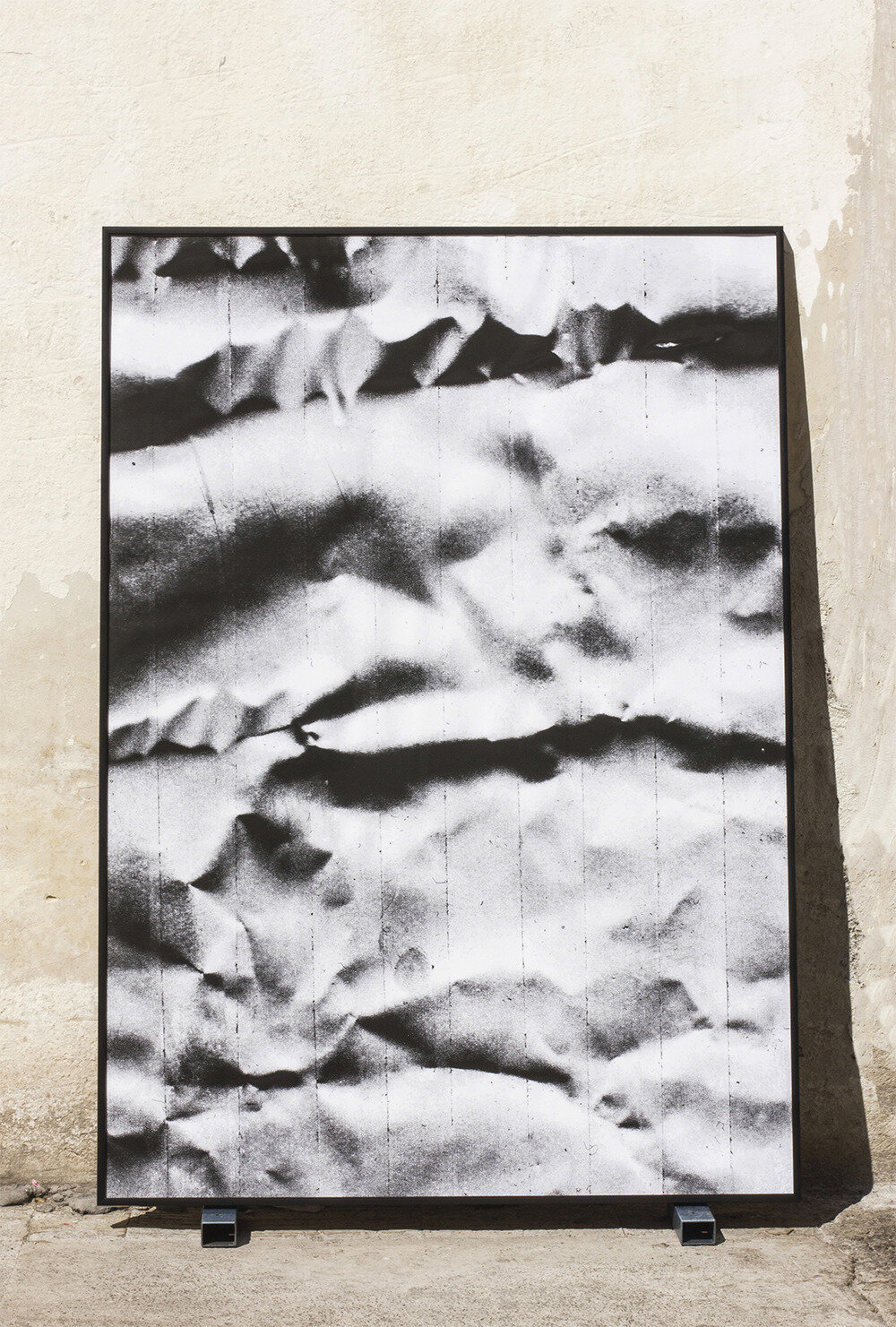
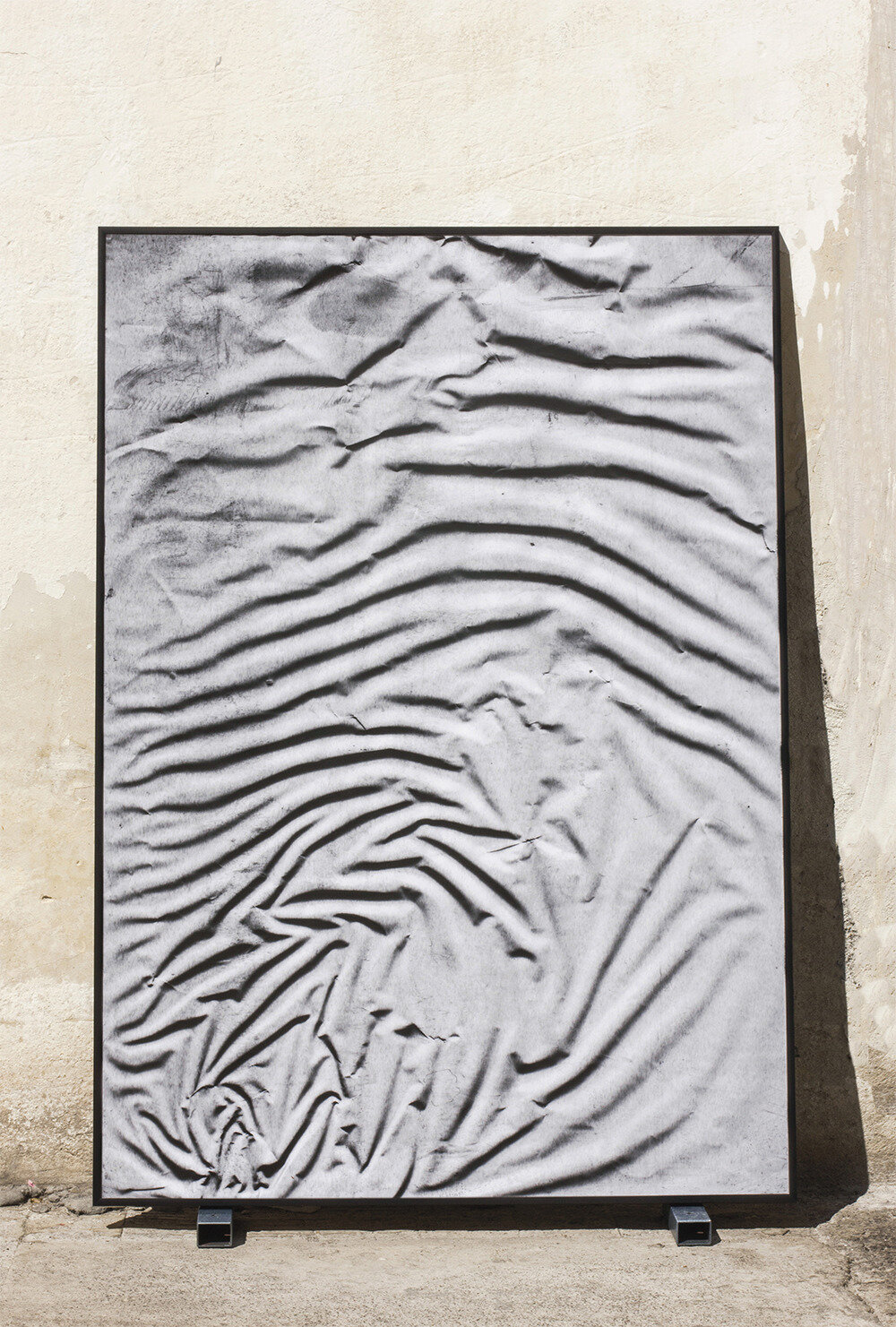


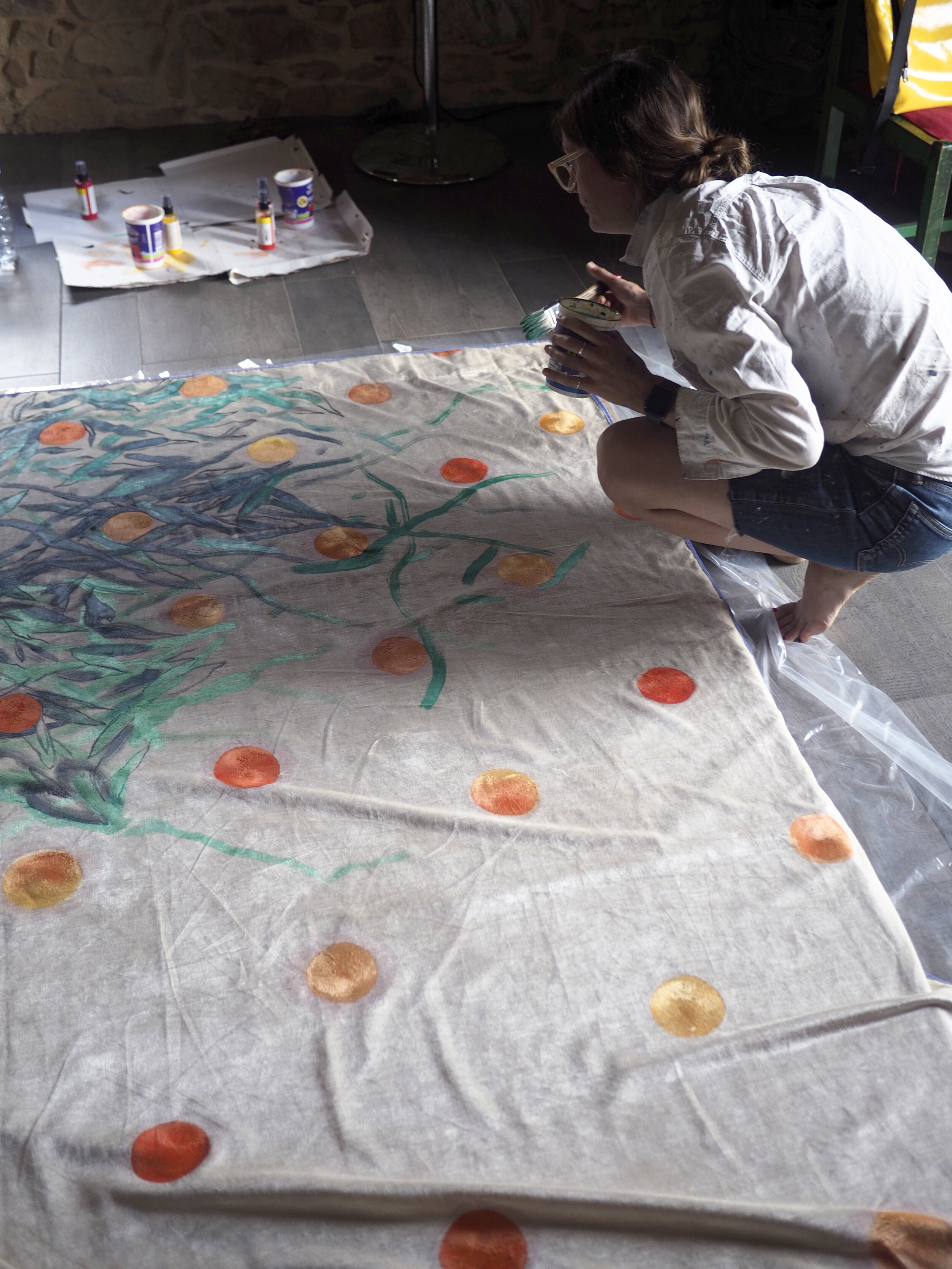
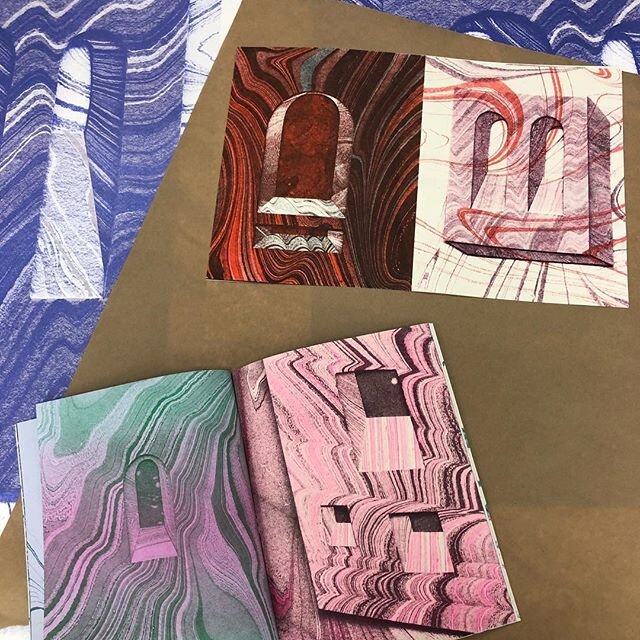
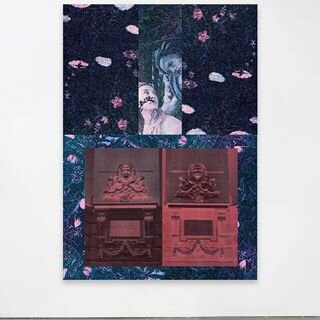
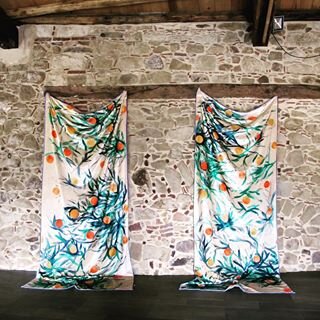

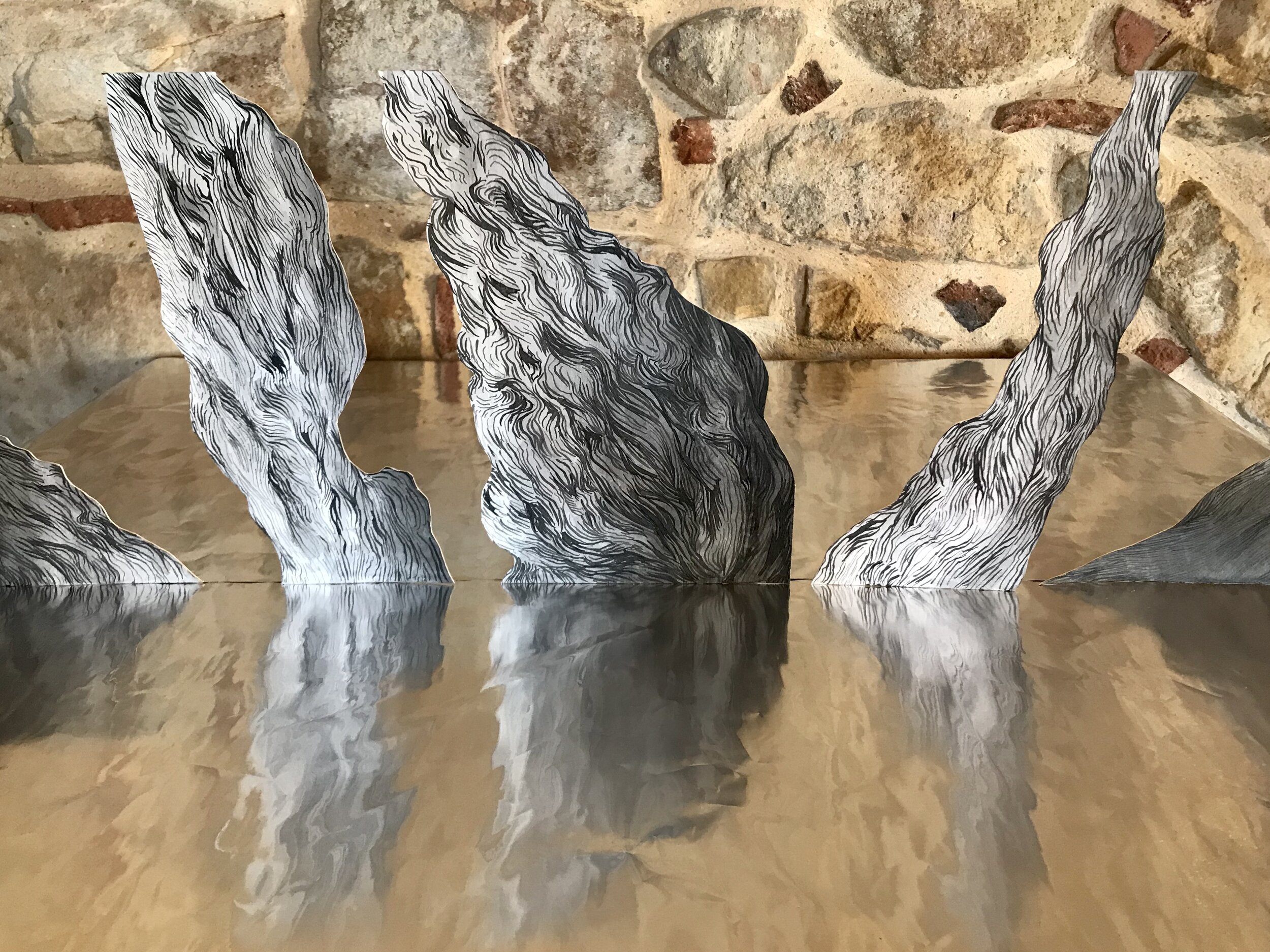
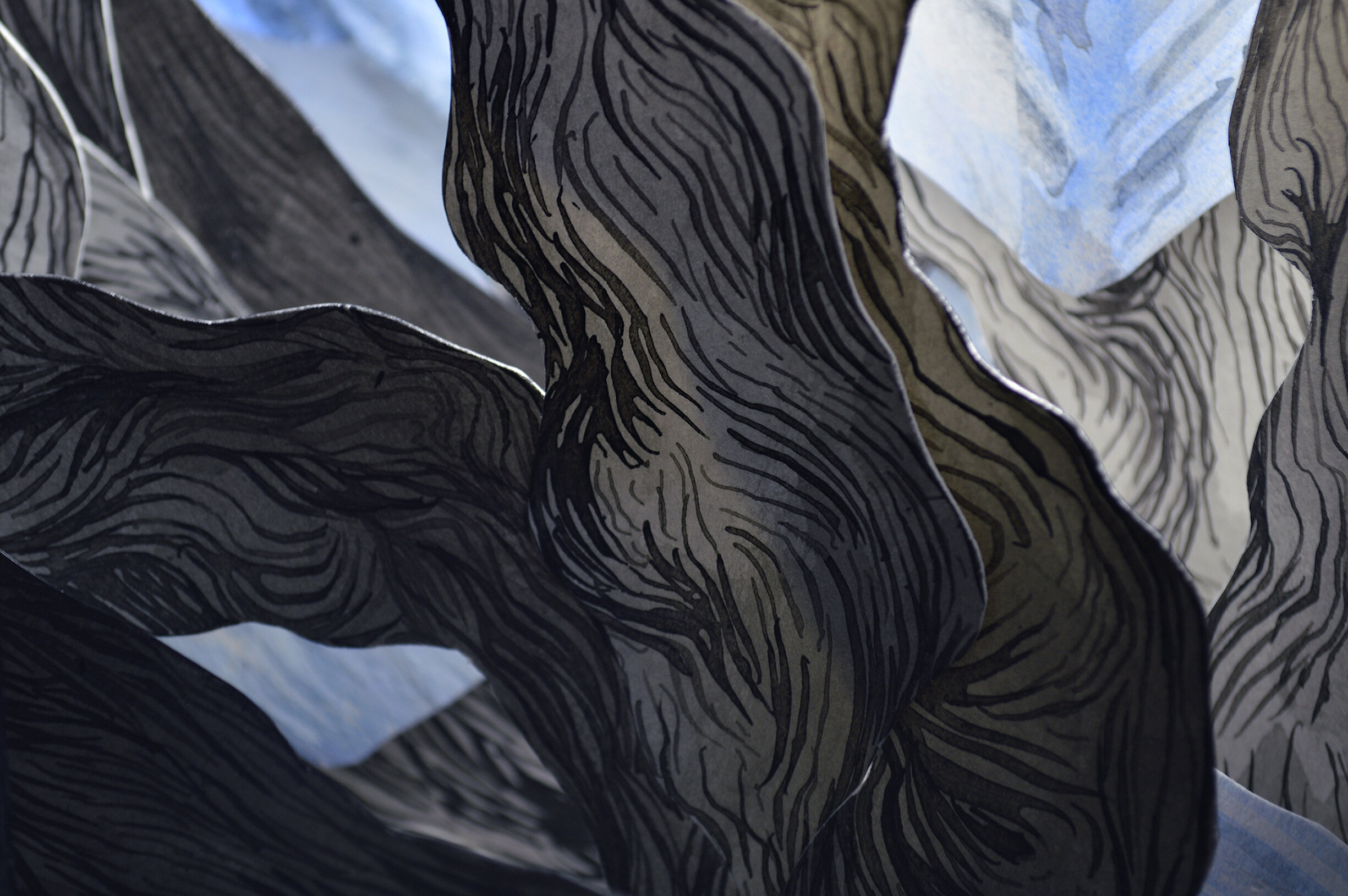
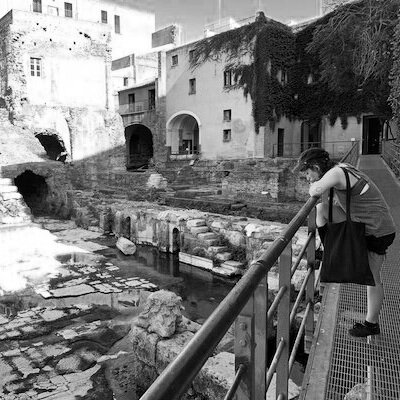


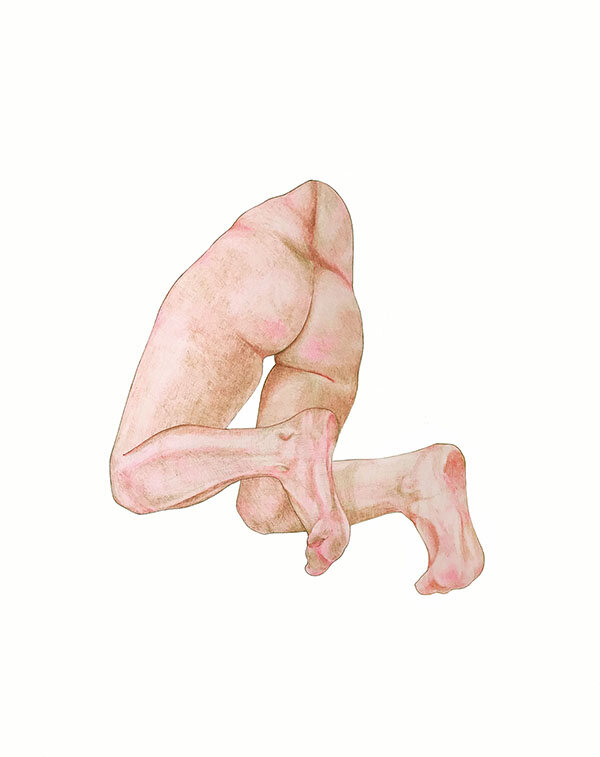

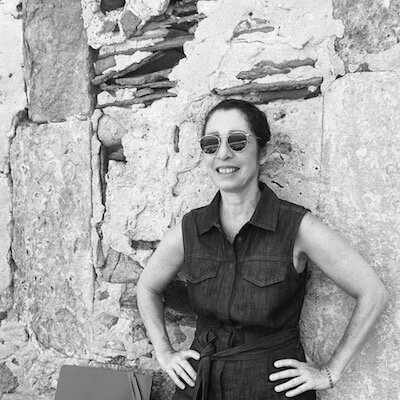

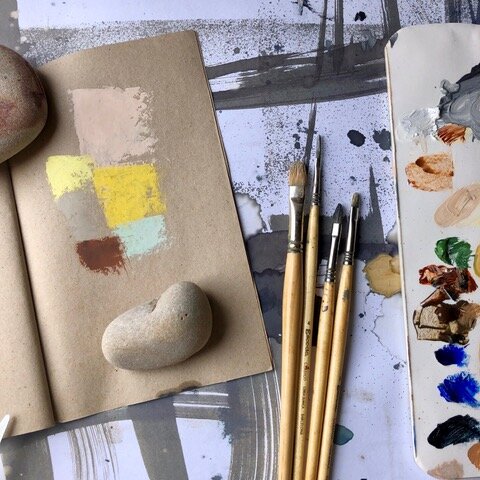
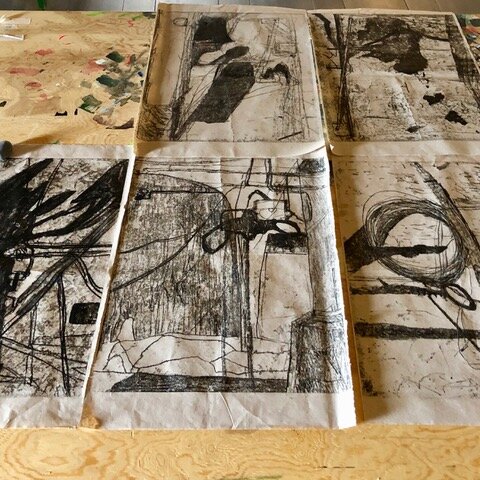
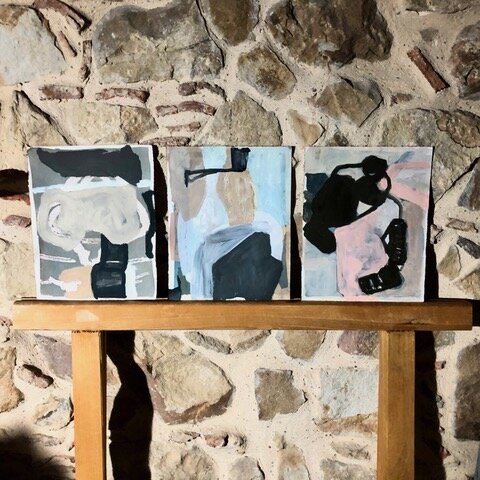
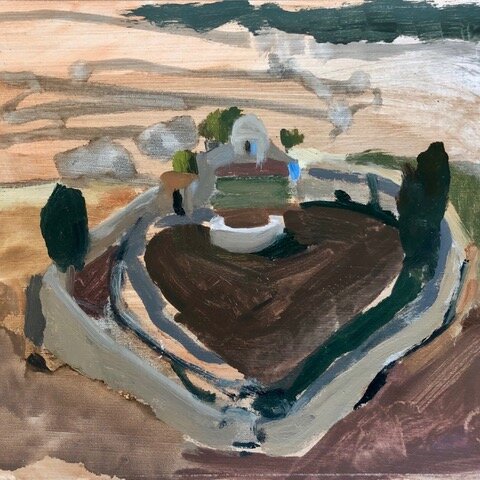


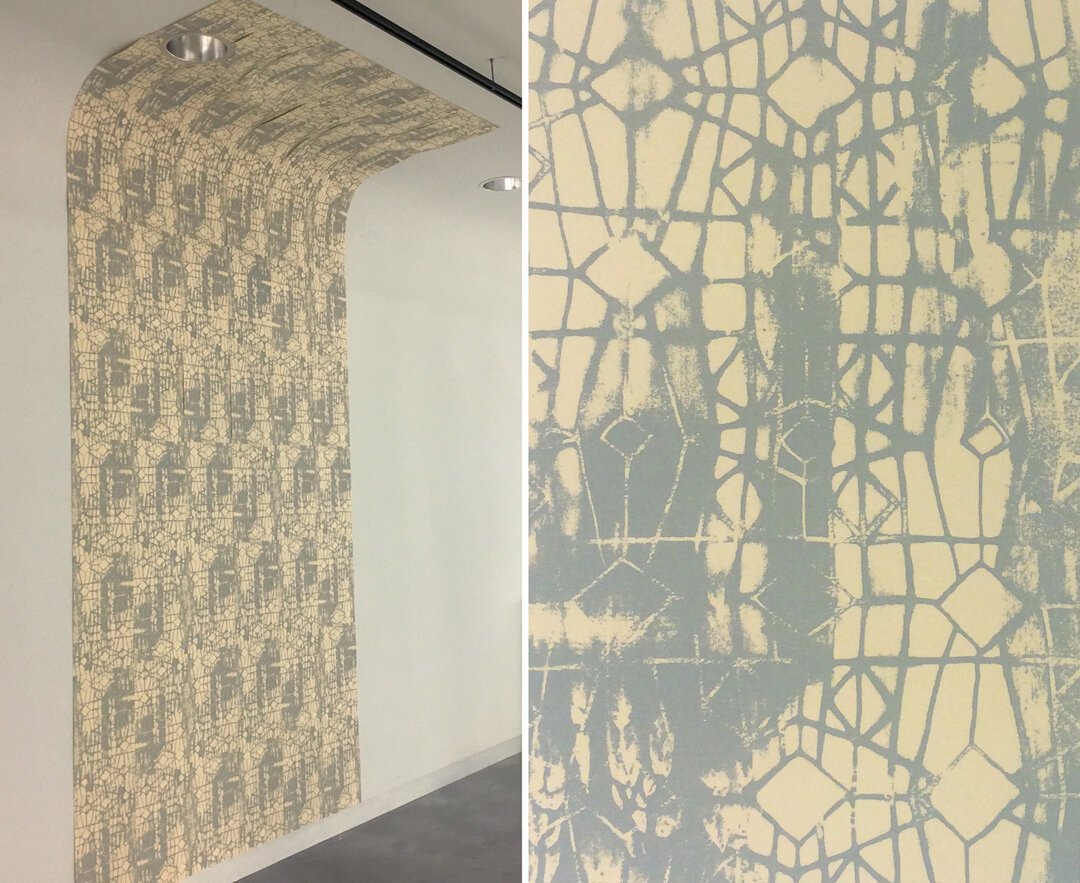
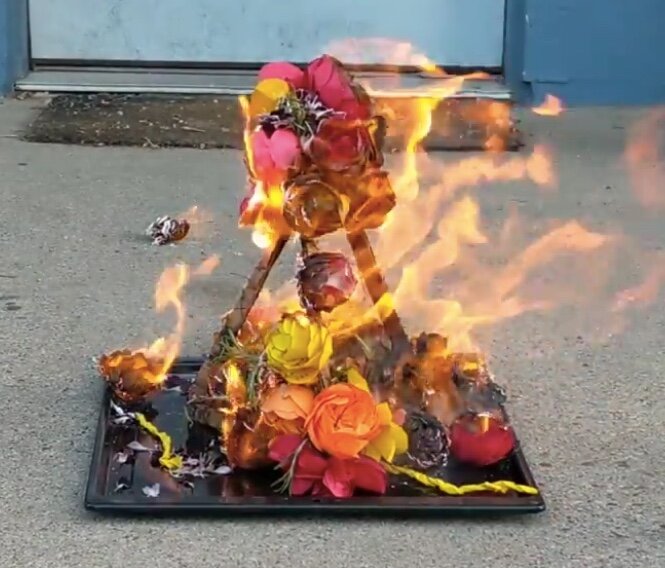
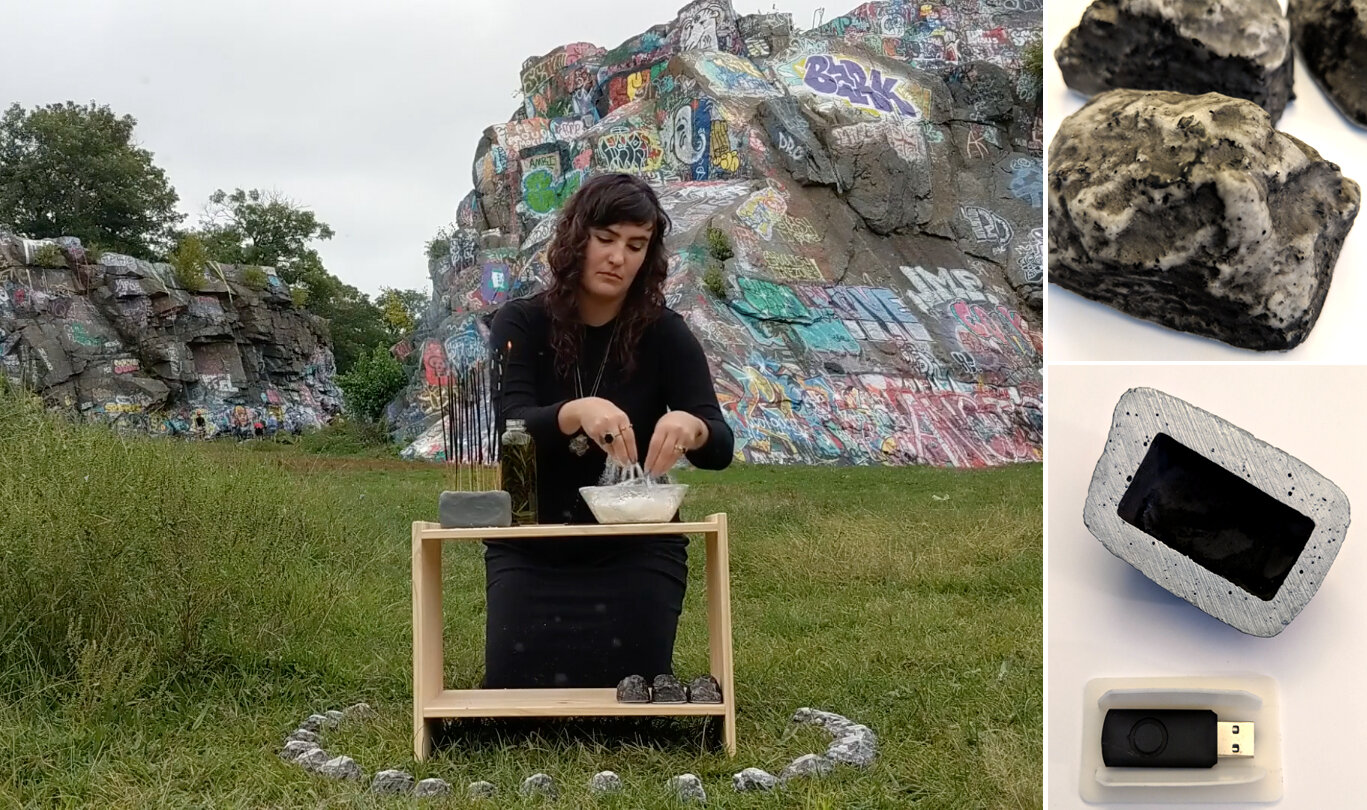
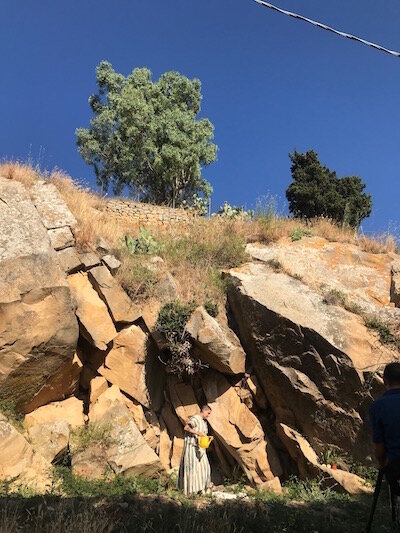

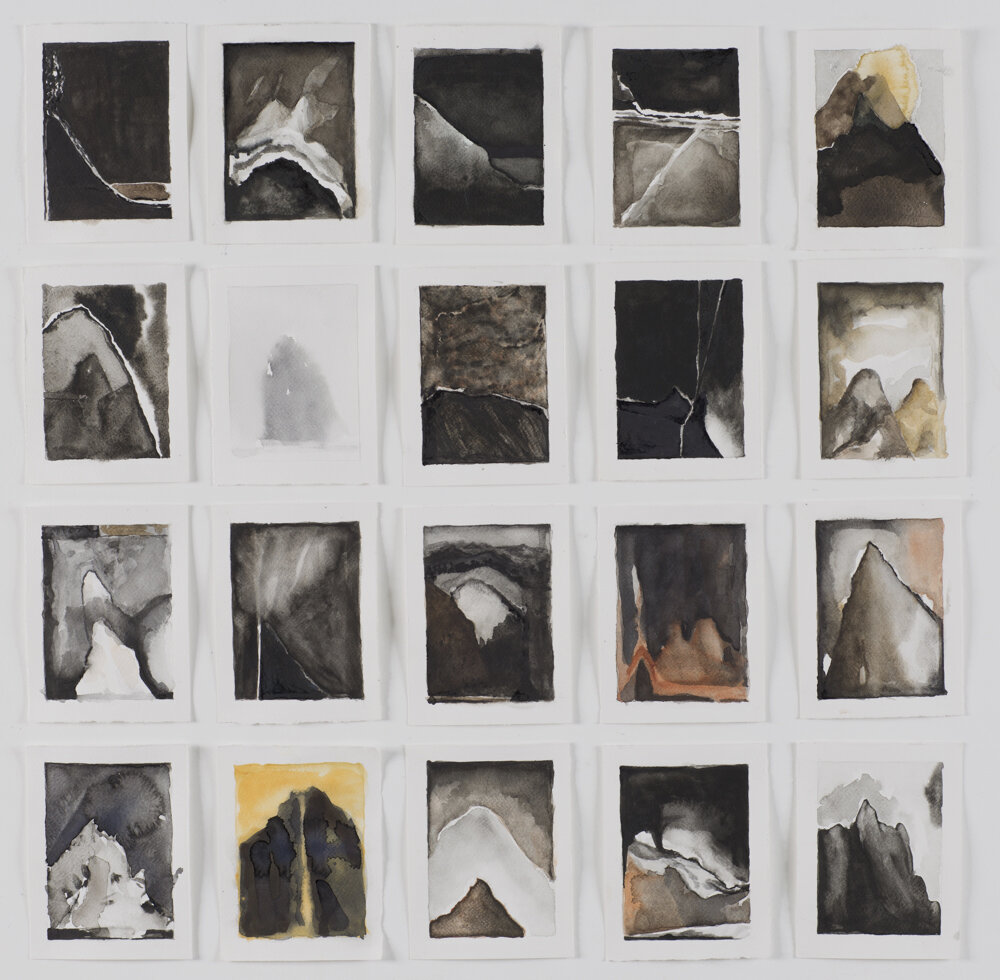
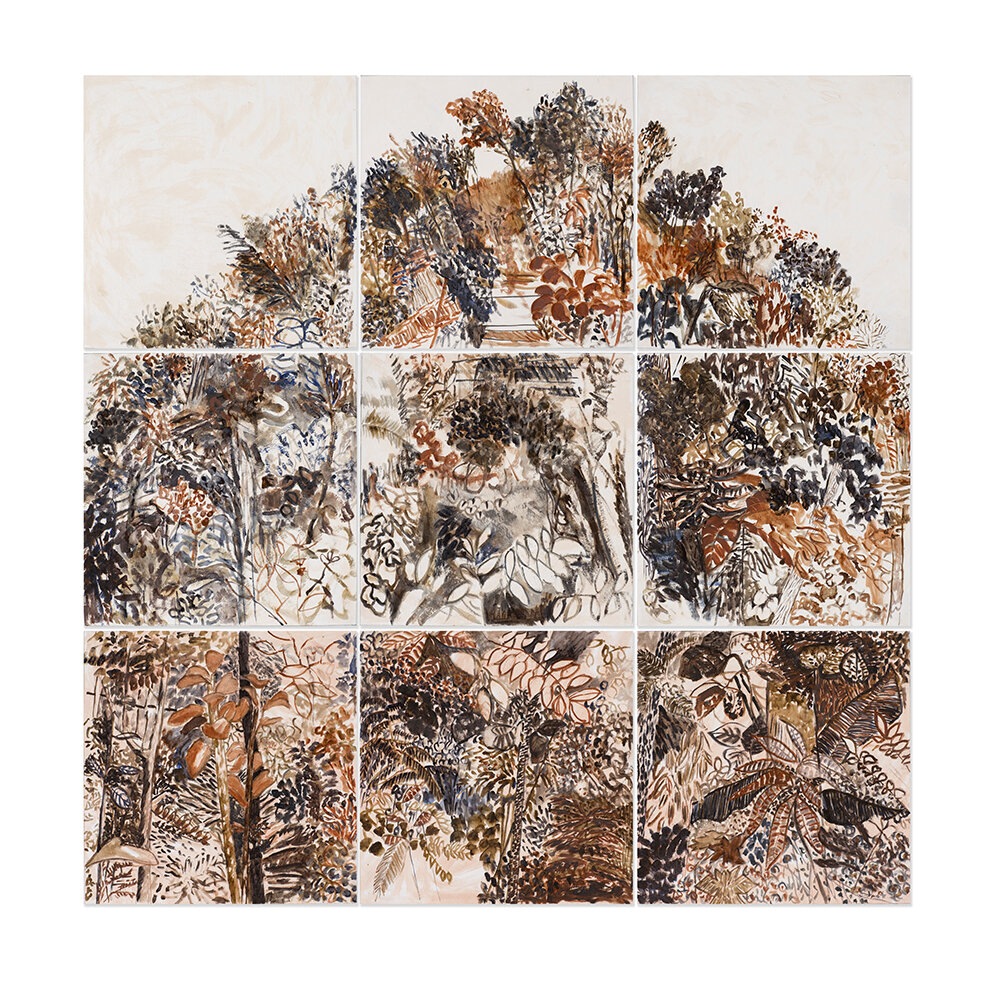
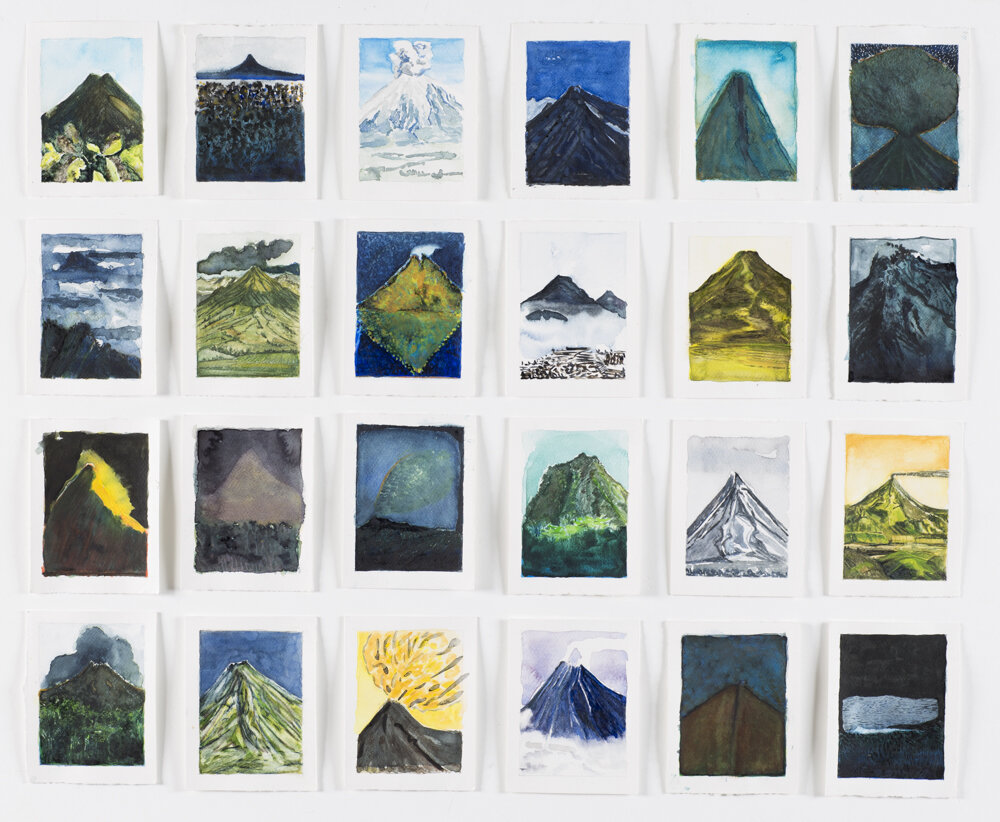
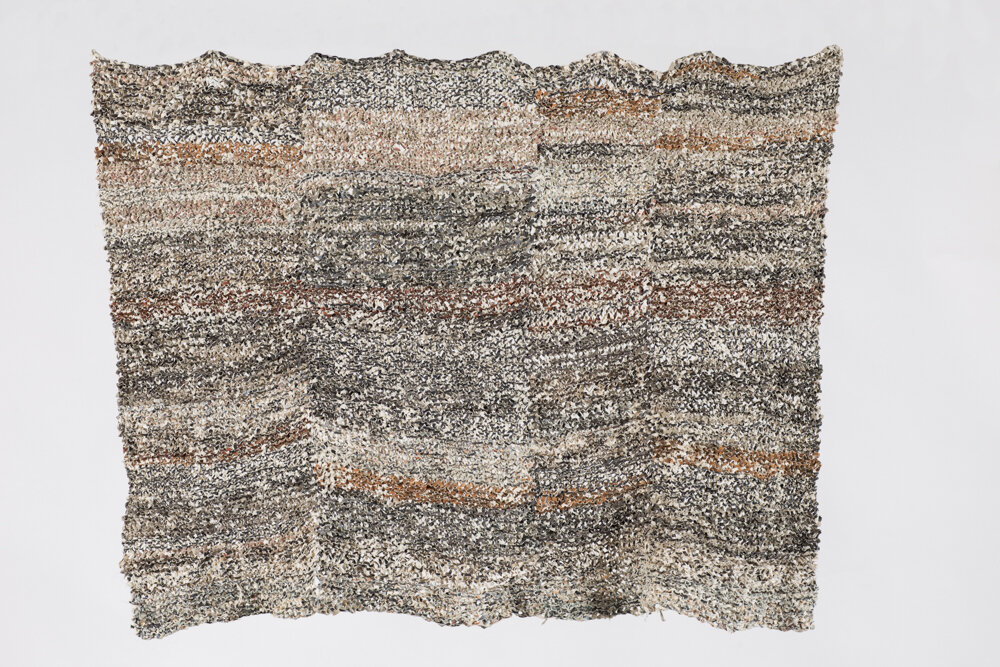

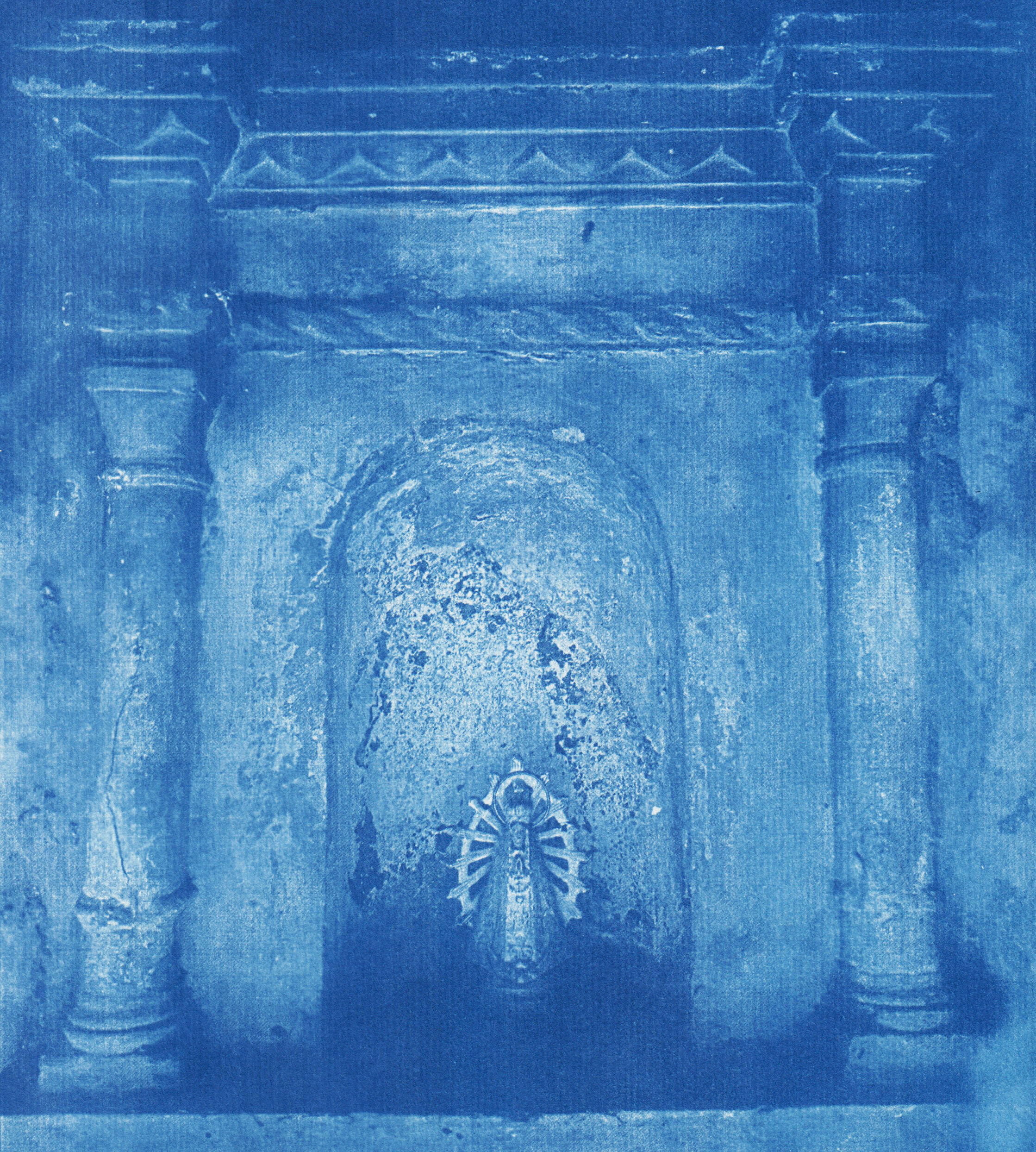
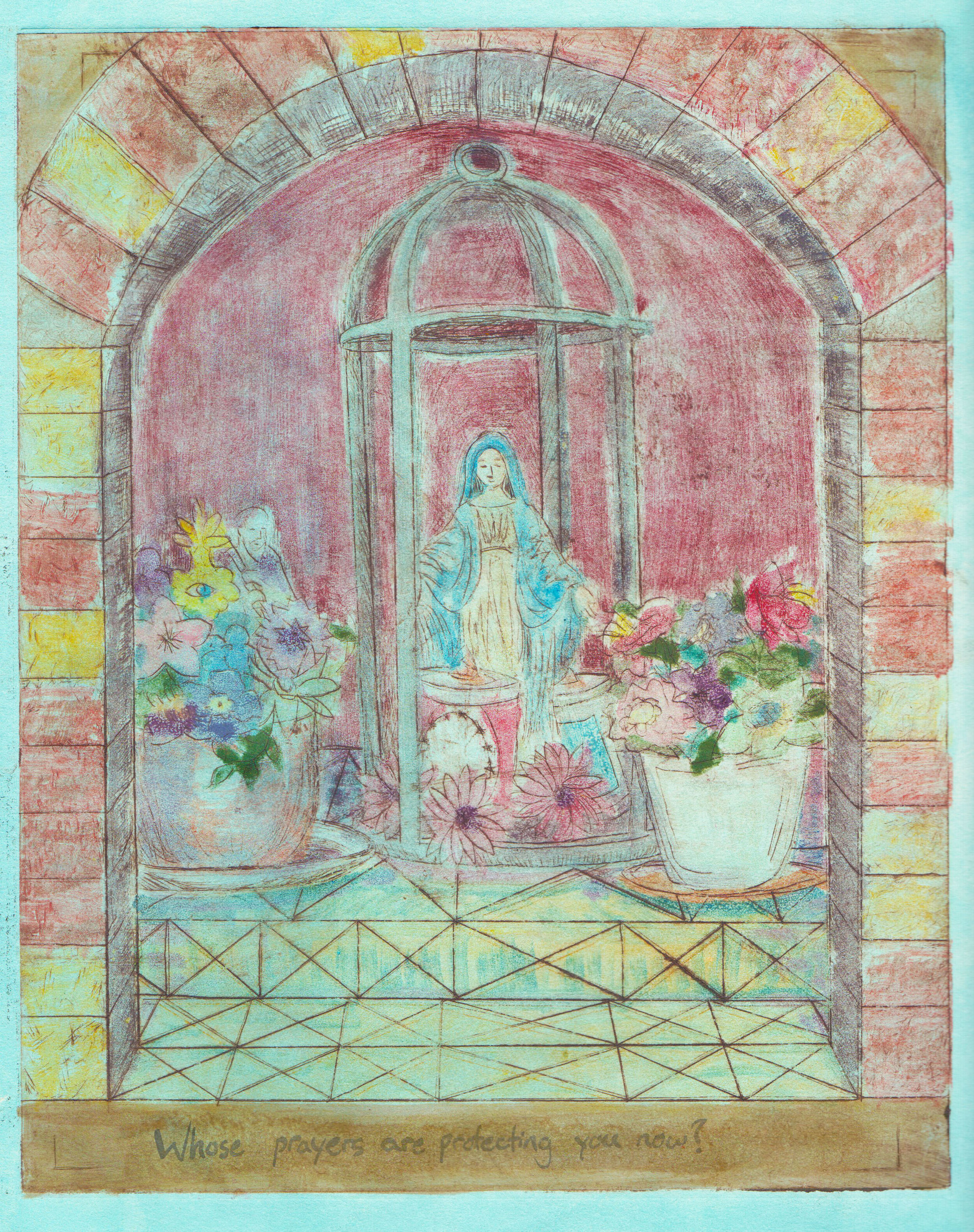

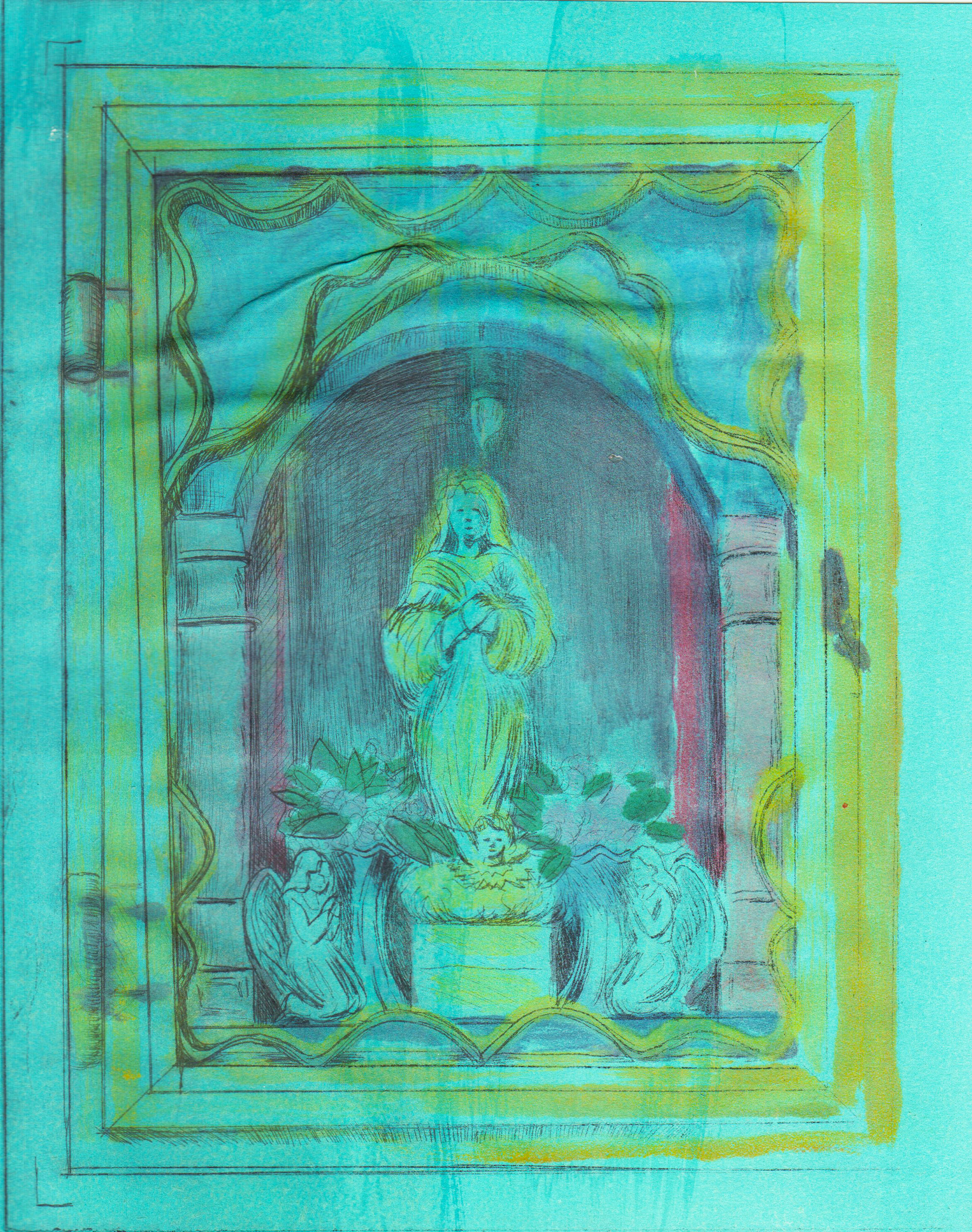


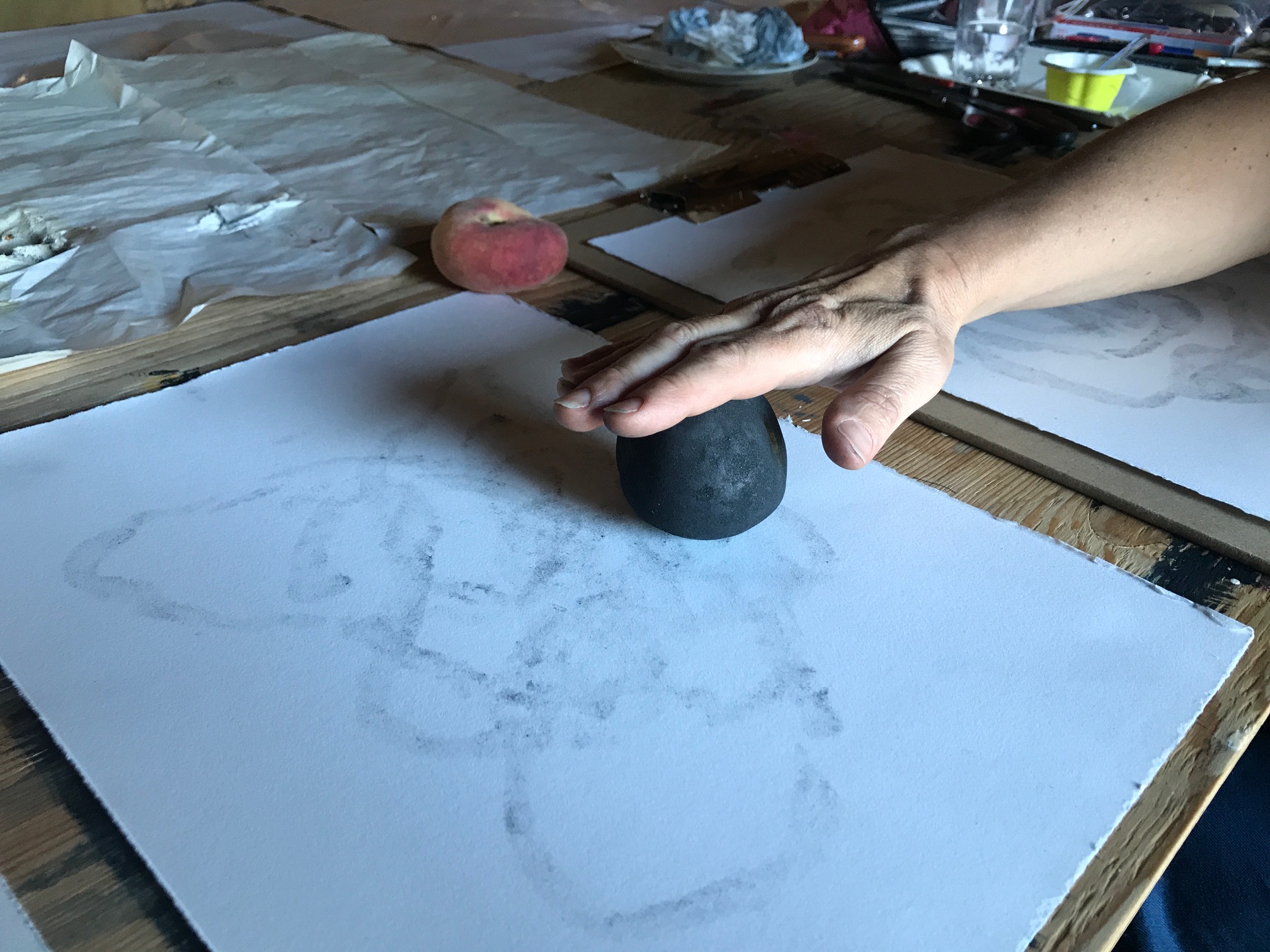
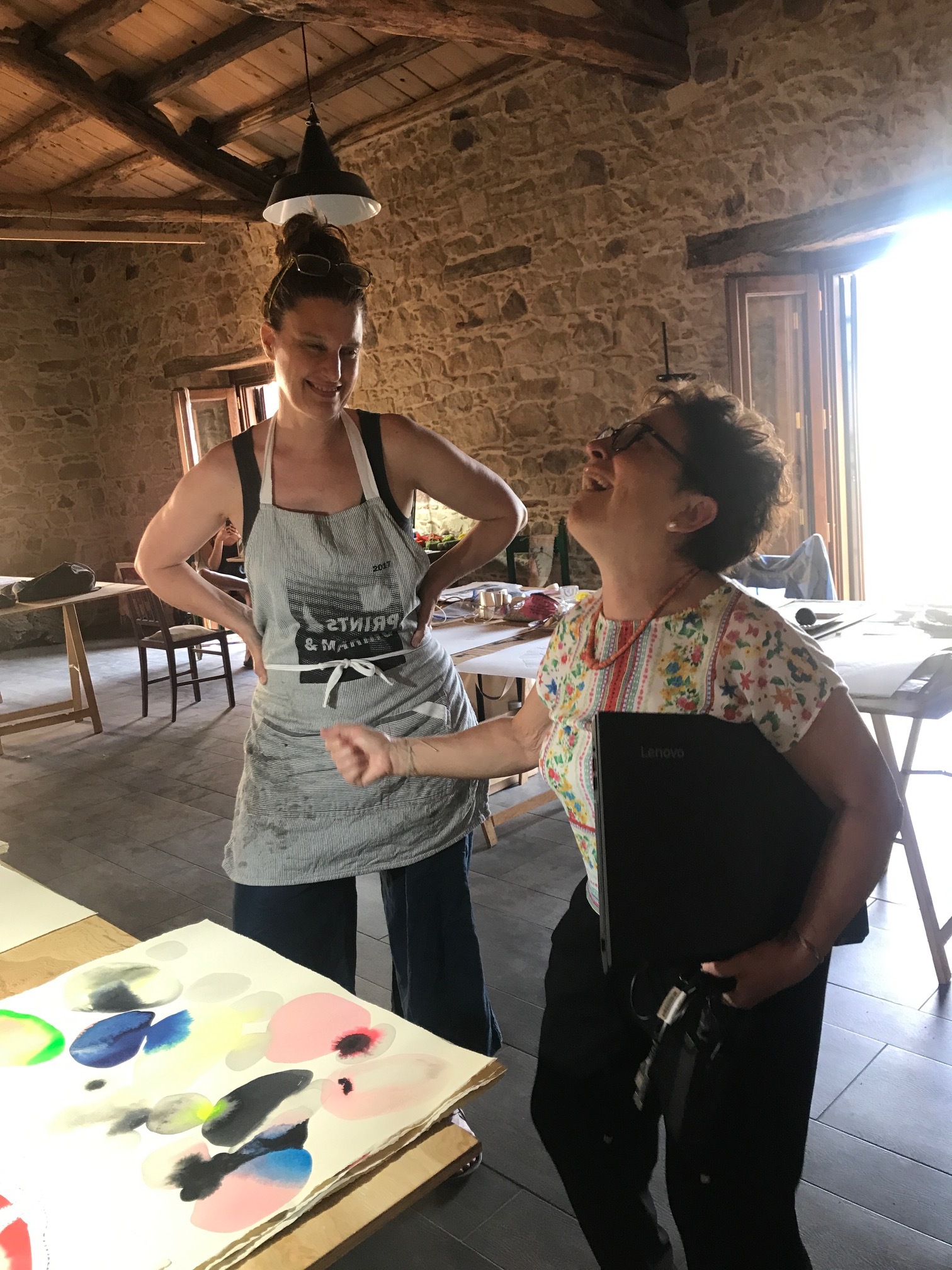


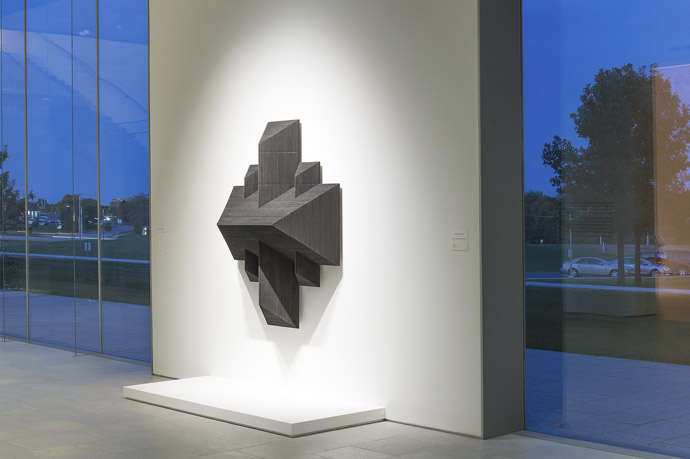
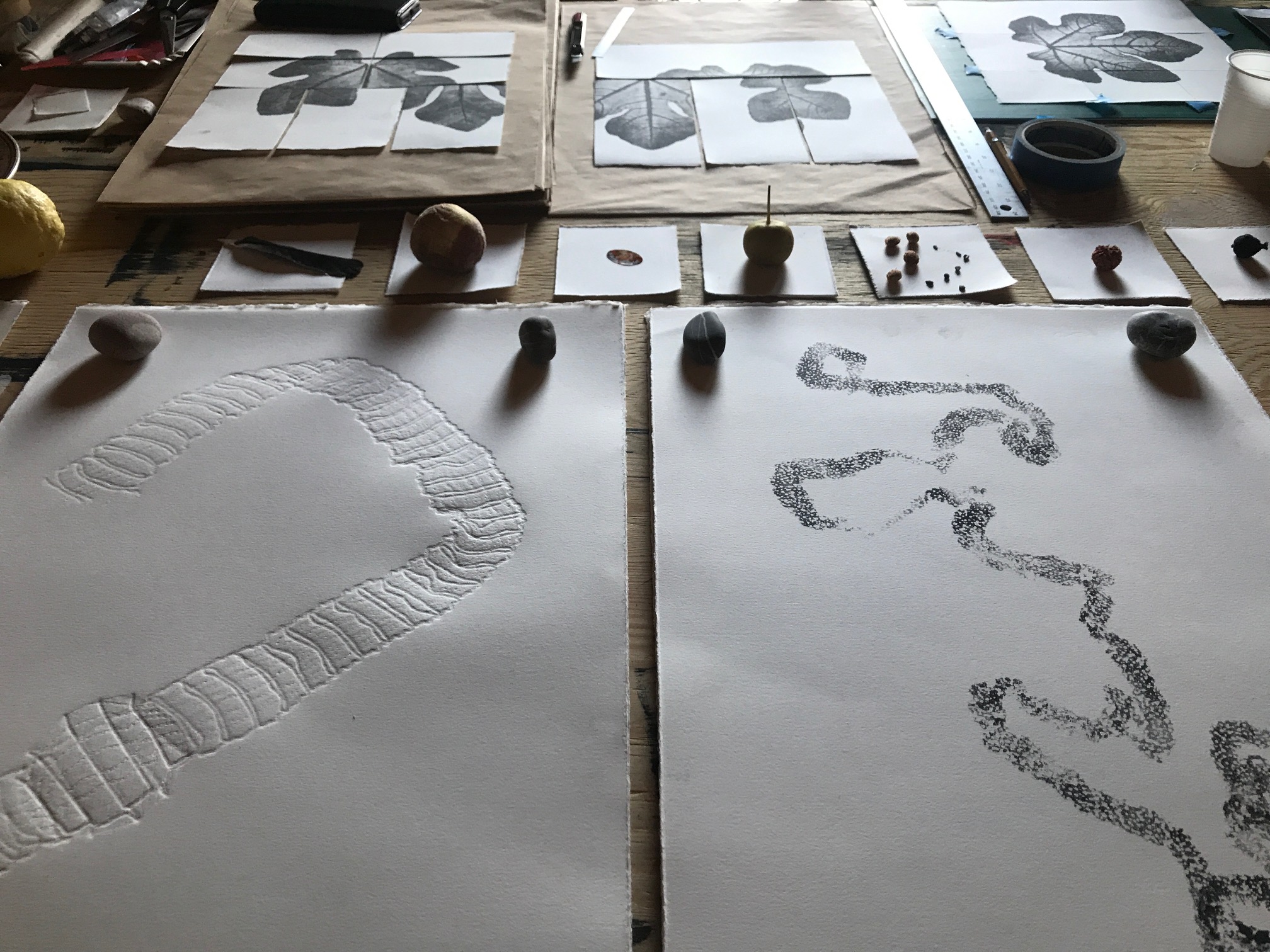





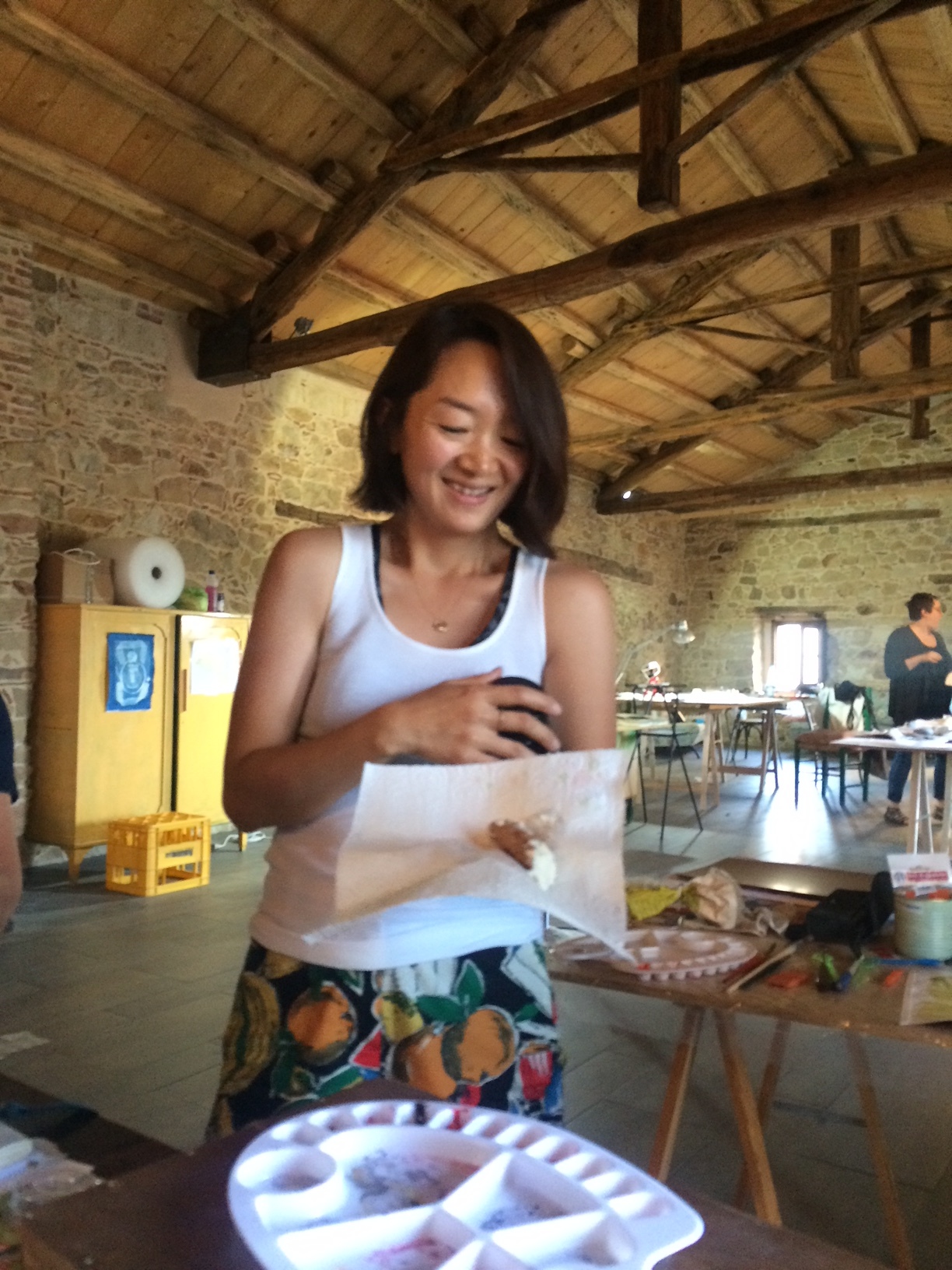



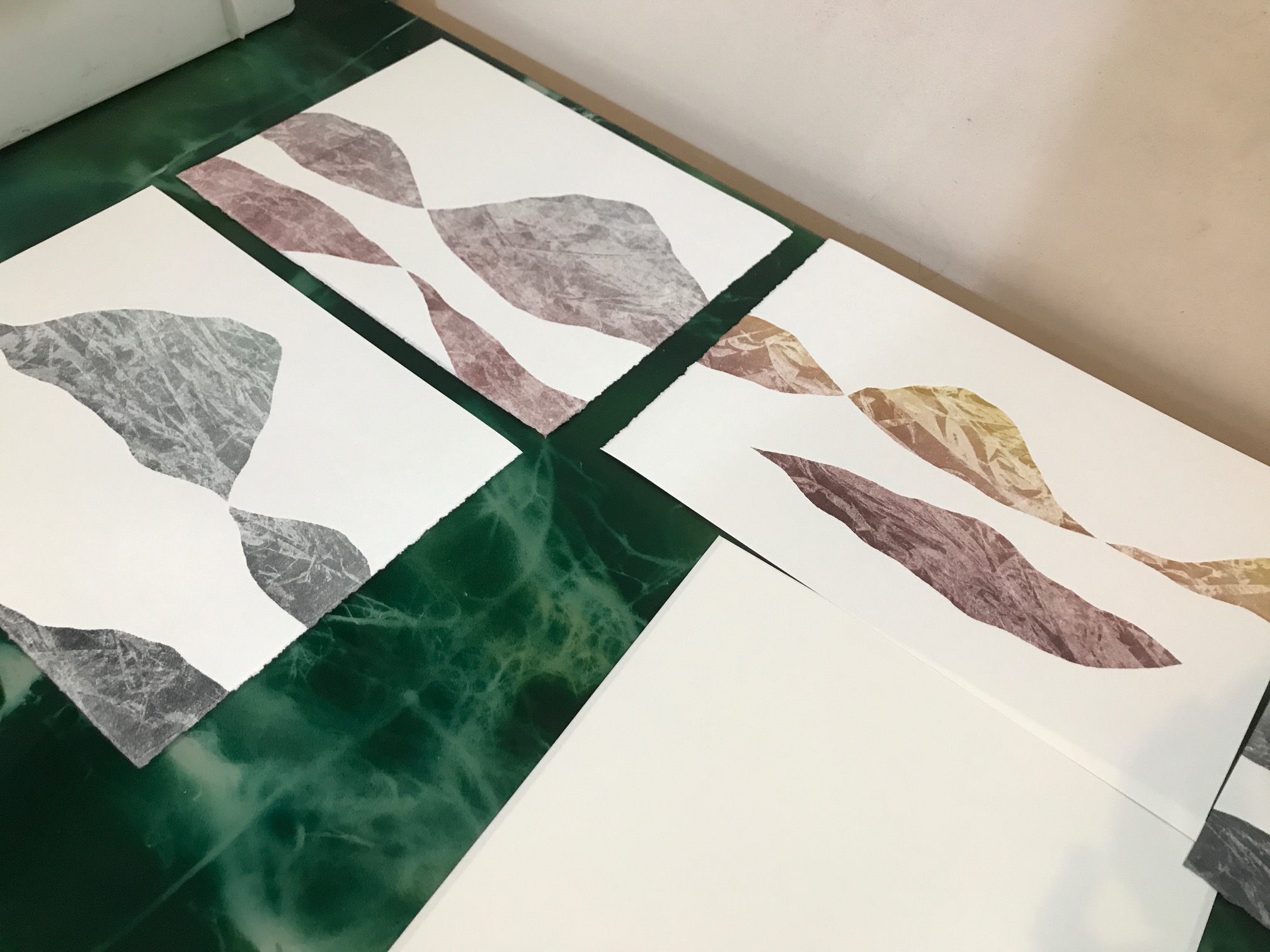







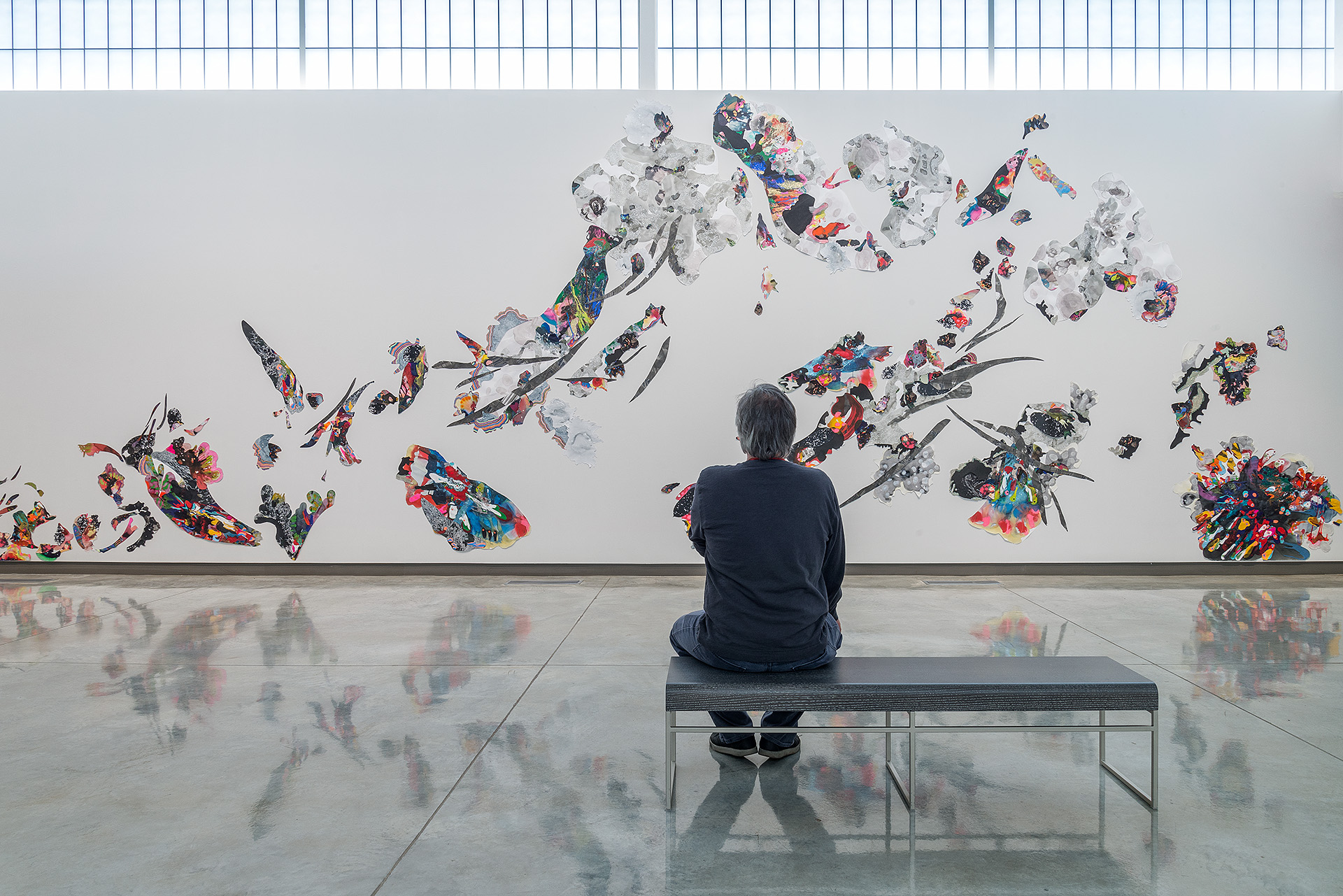

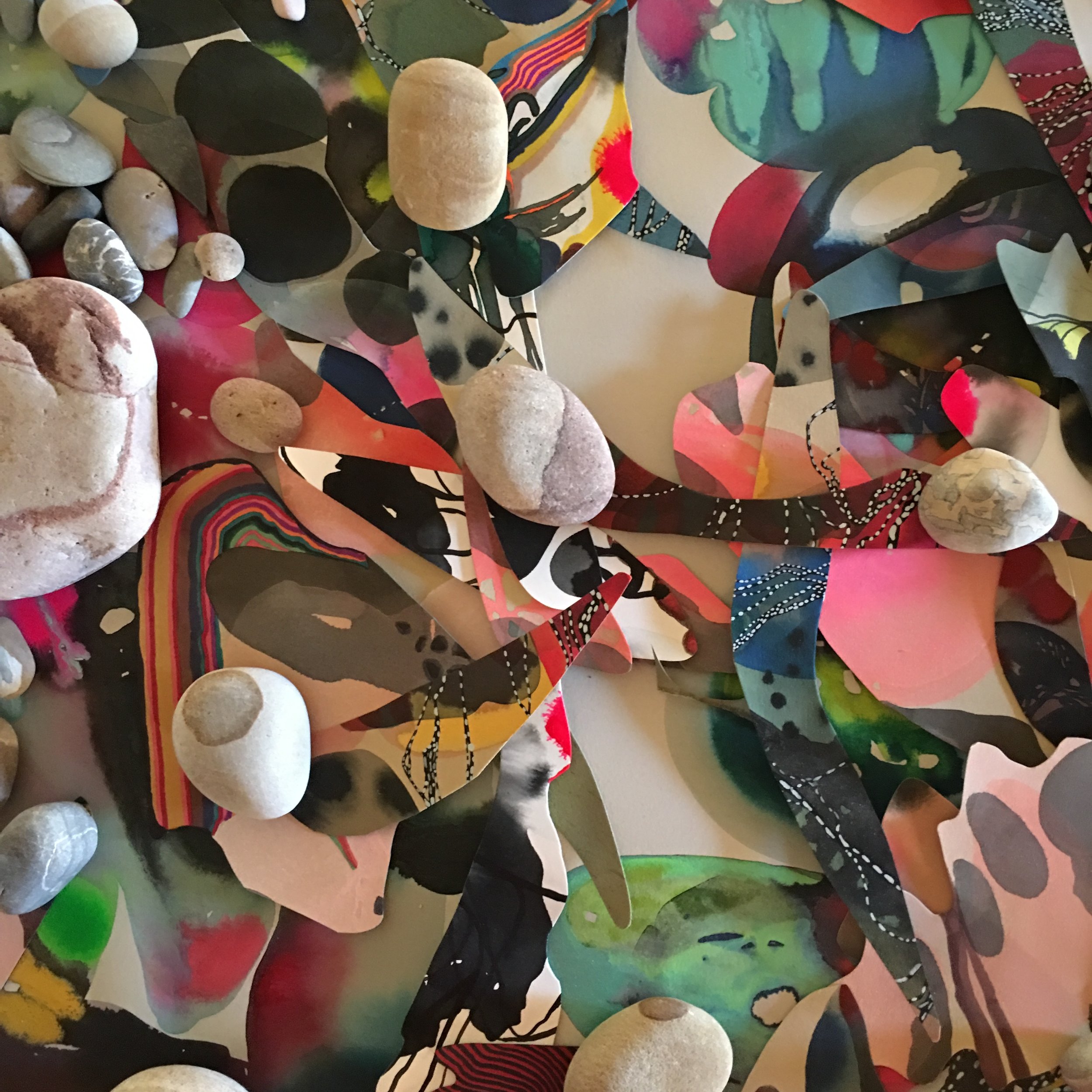











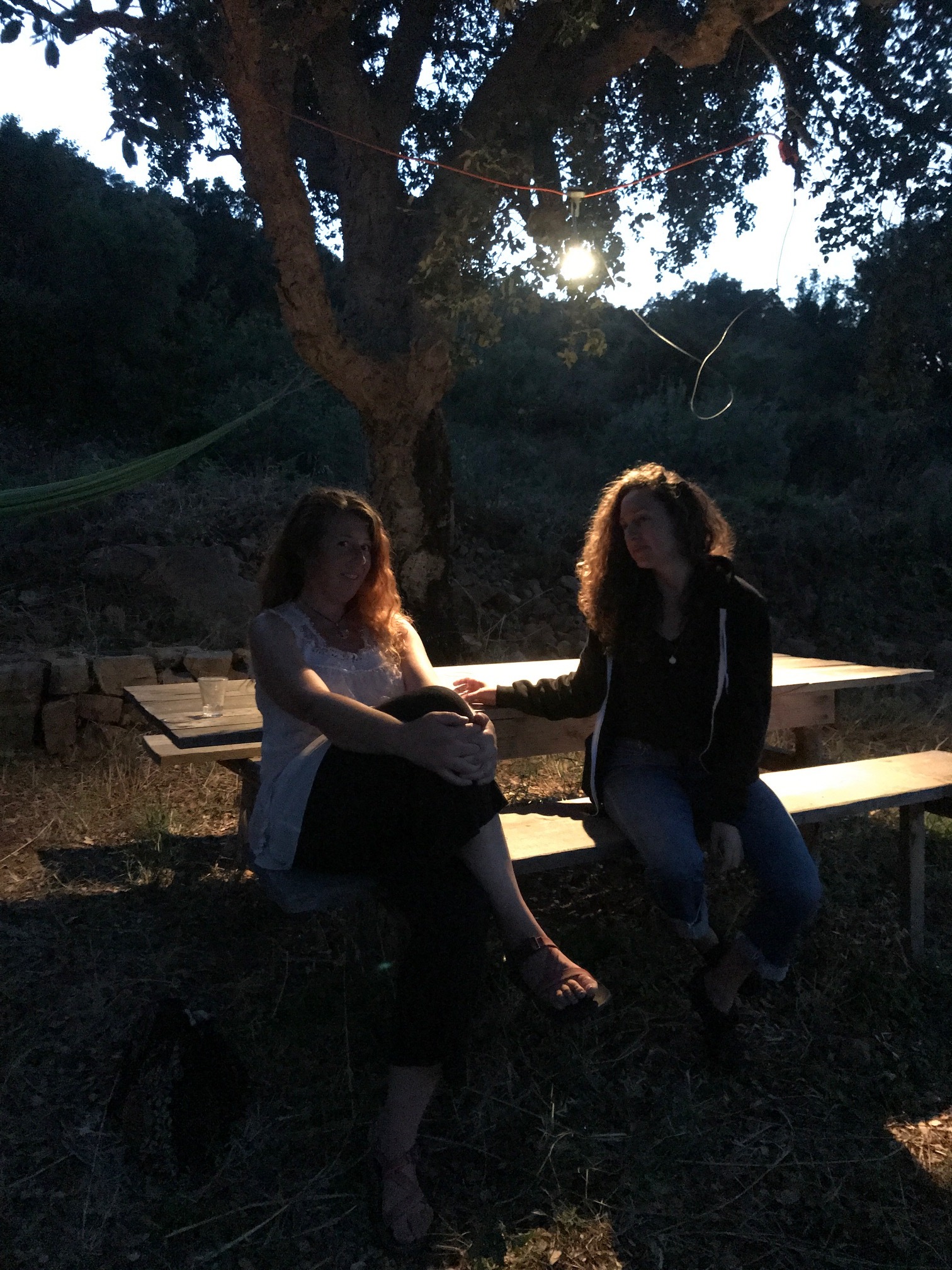


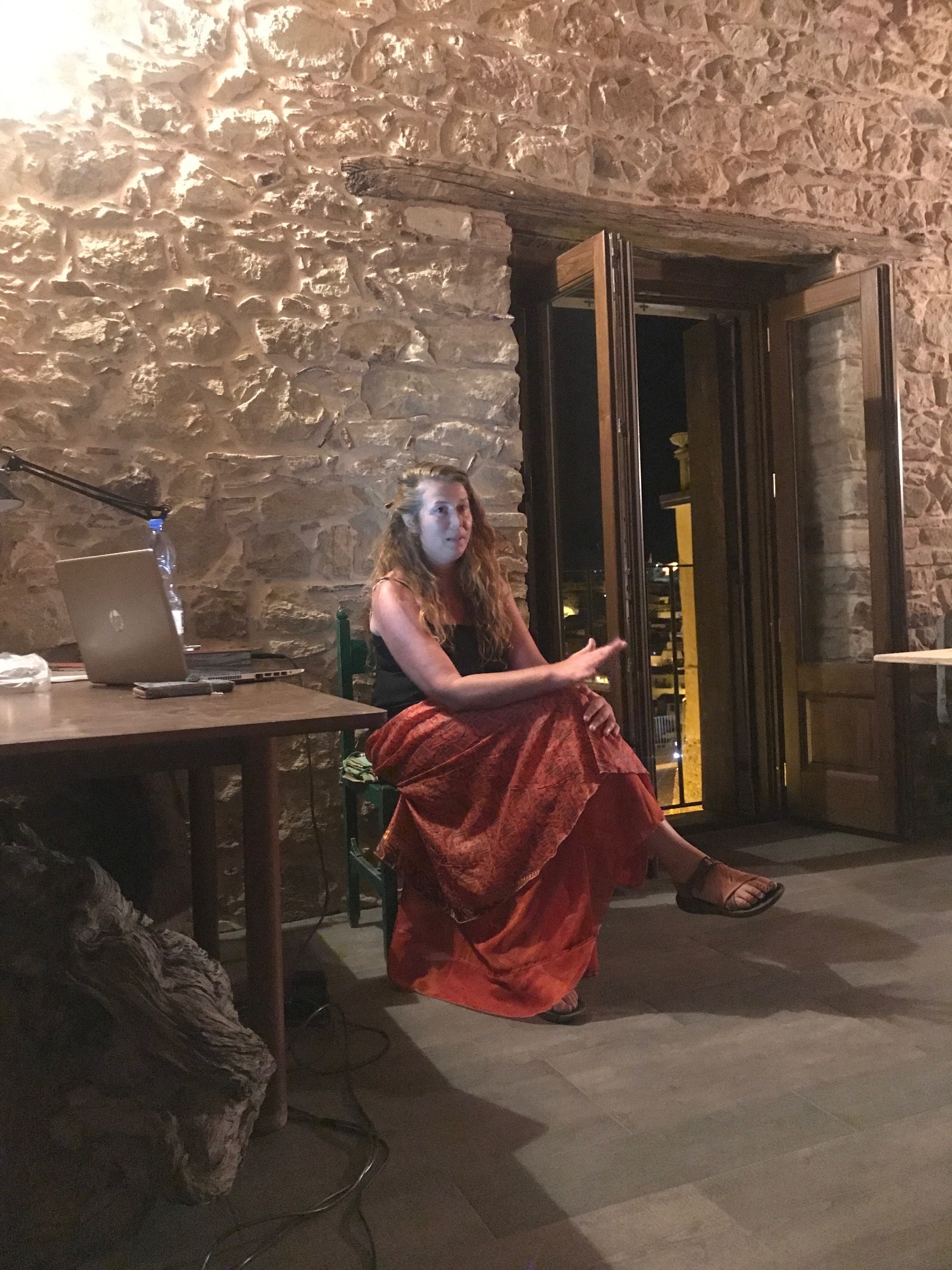






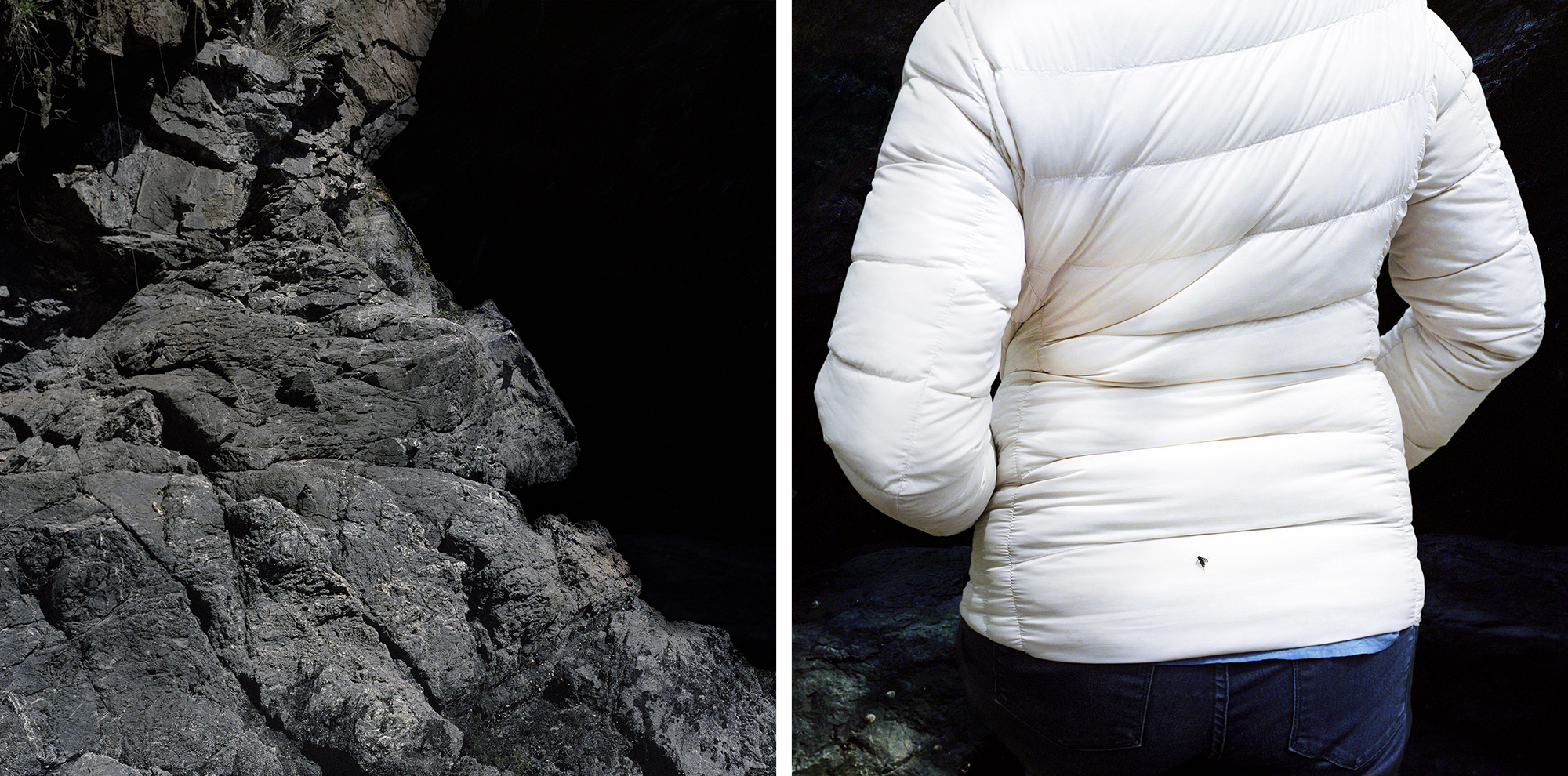




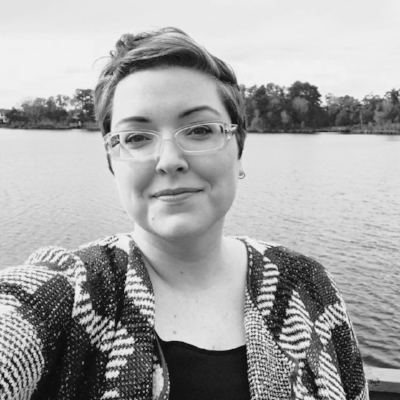
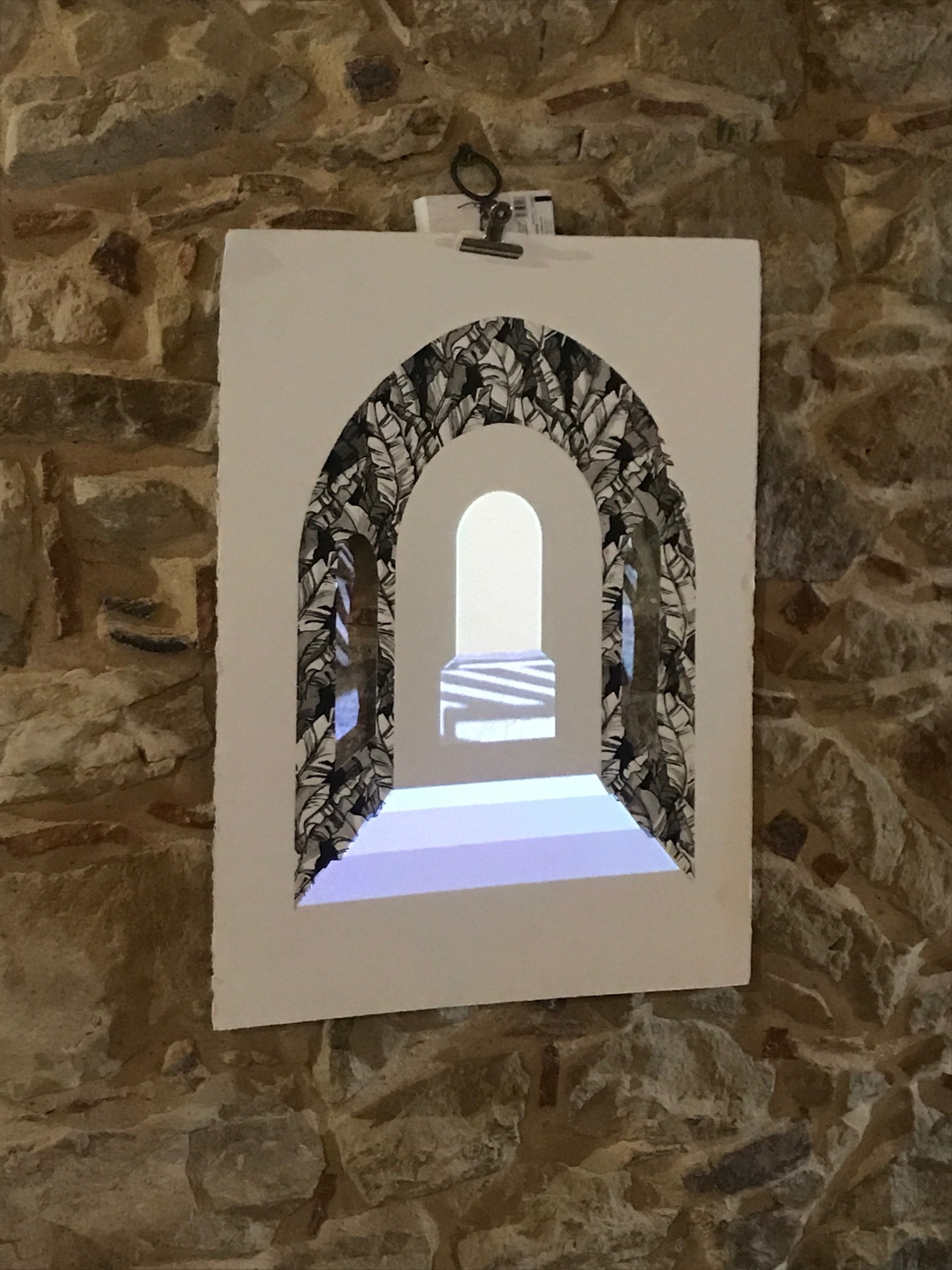


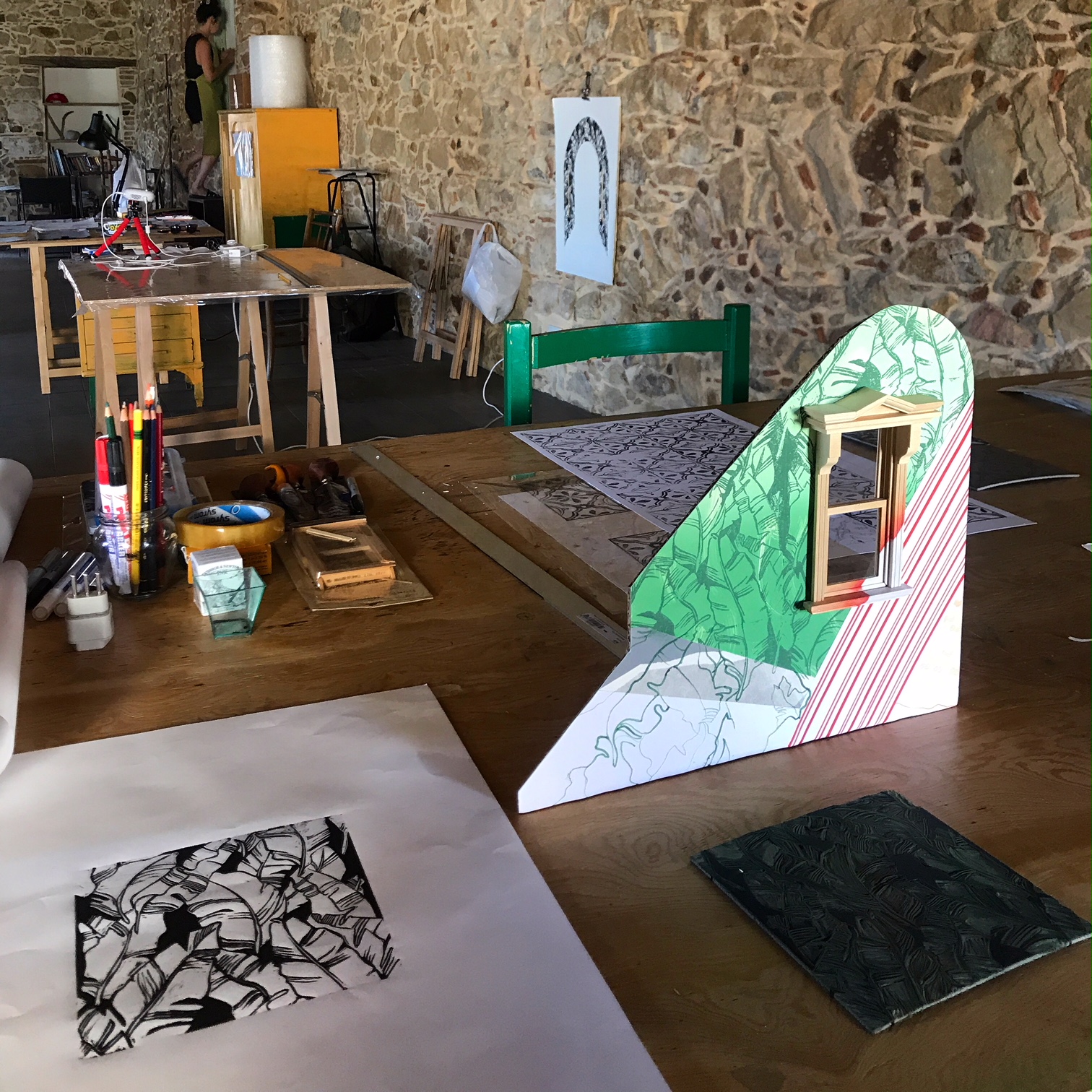

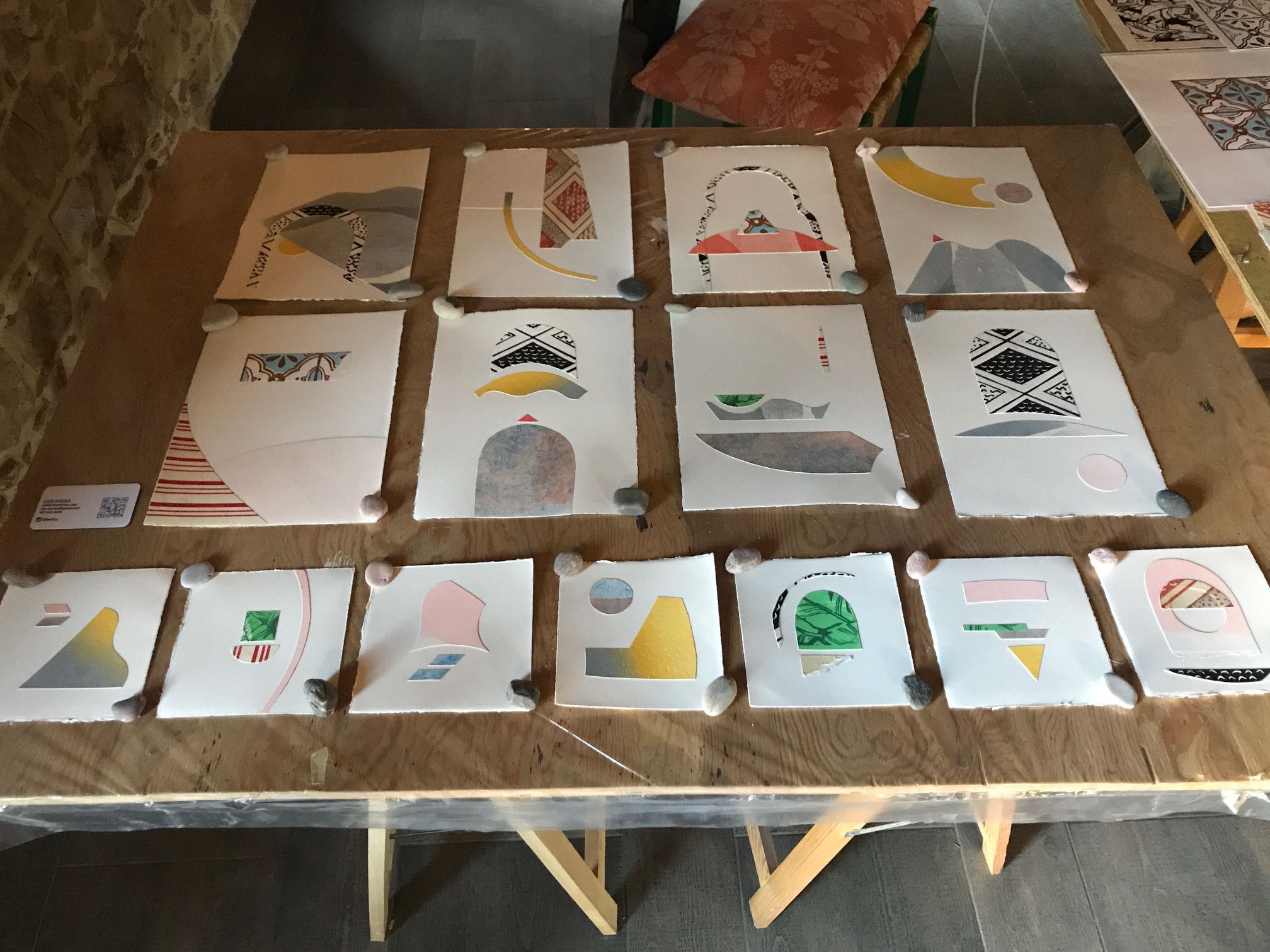











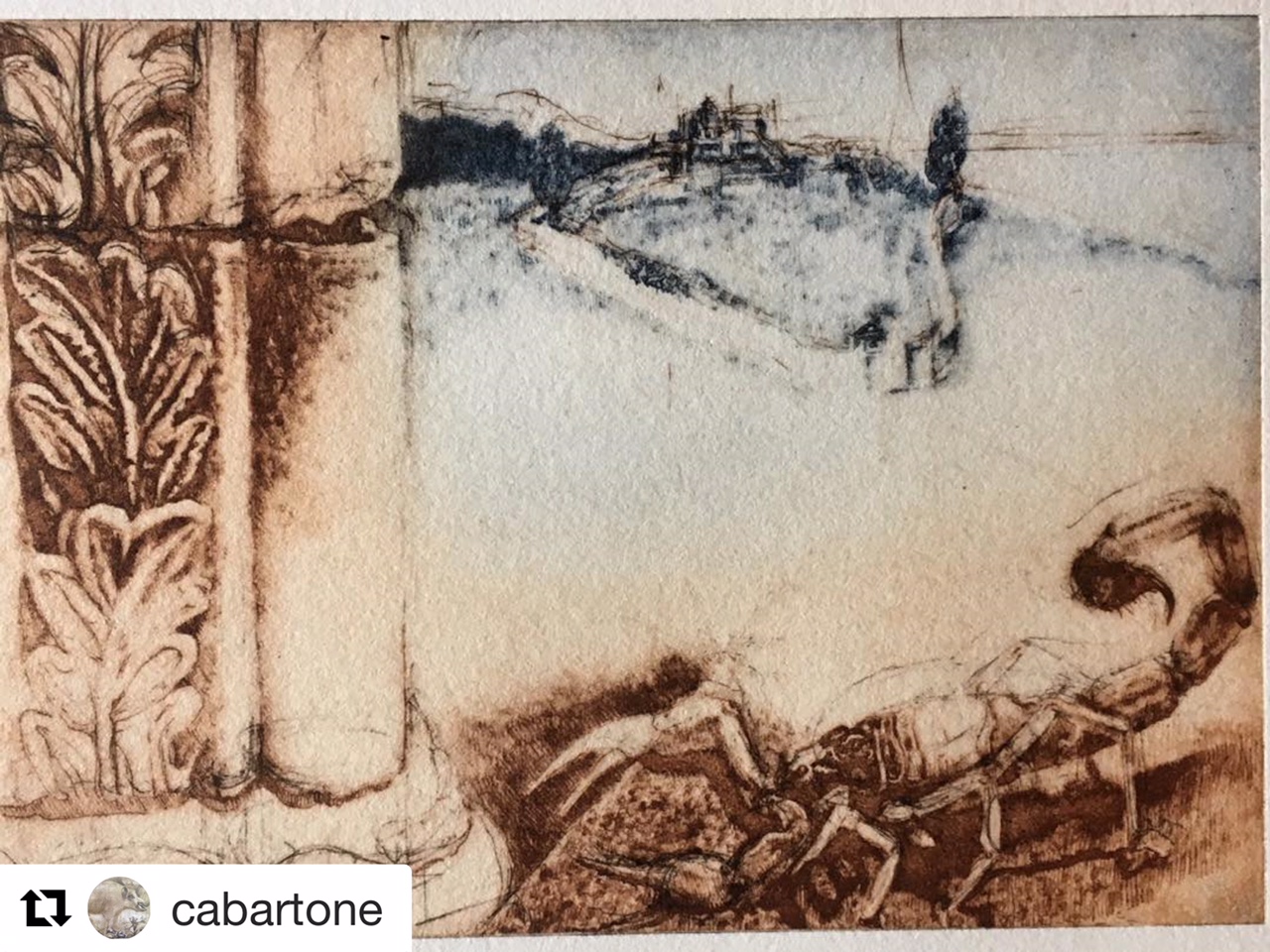








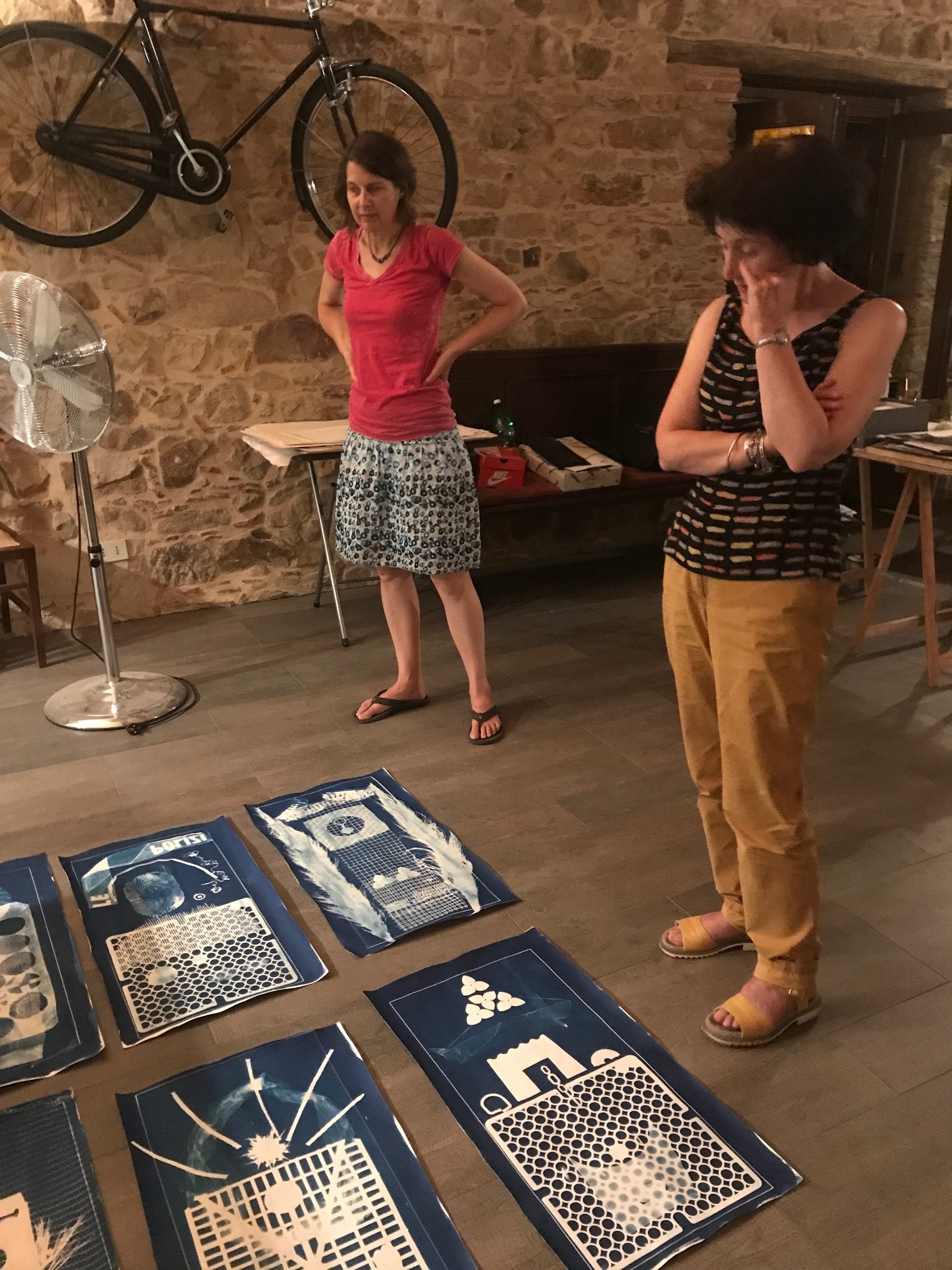











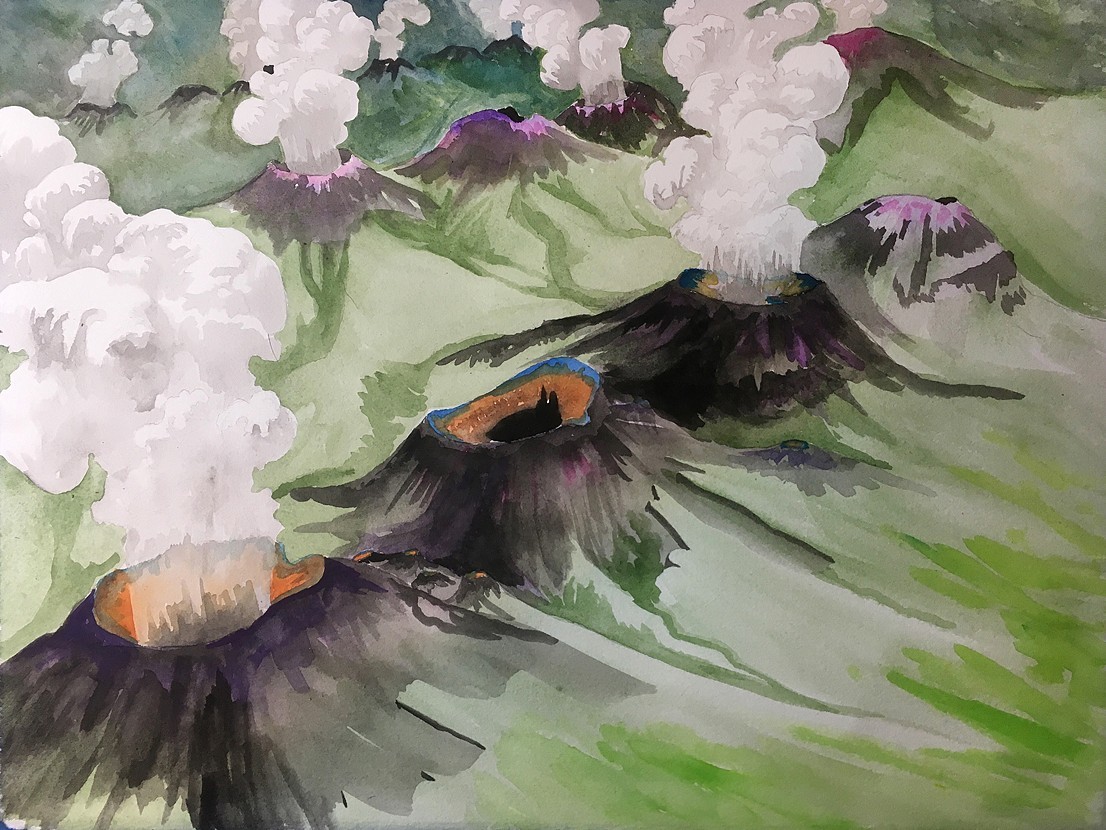









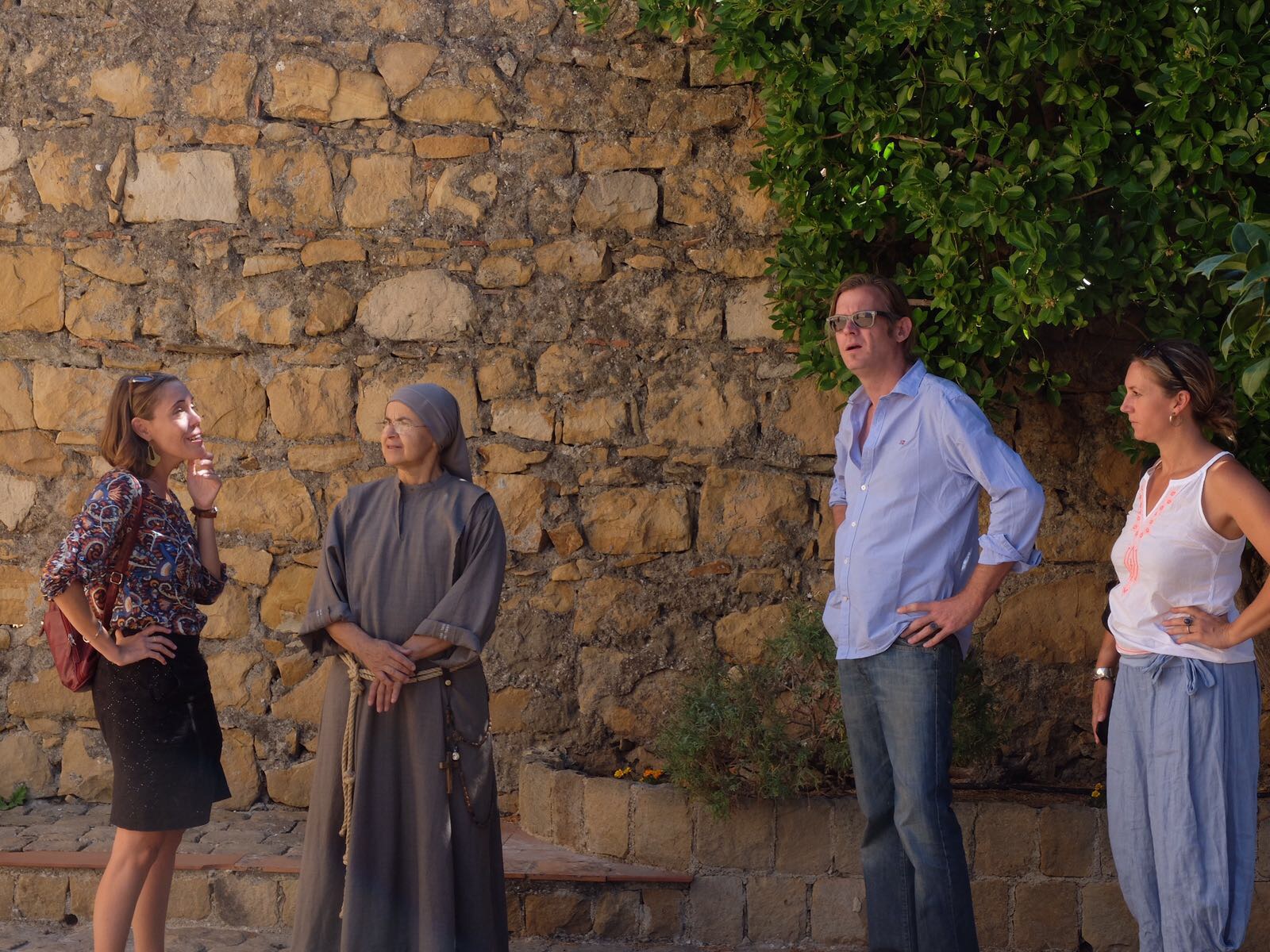


![cloud-bound[1].jpg](https://images.squarespace-cdn.com/content/v1/56ad0d068b38d4e9f6cc8158/1536537569686-480DWC62NRSHSD13C9WX/cloud-bound%5B1%5D.jpg)

